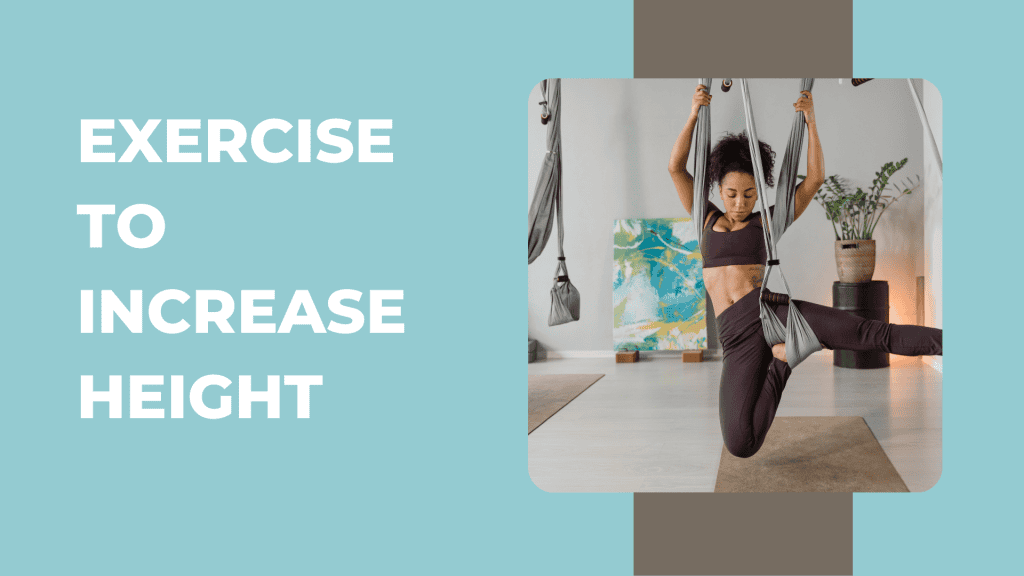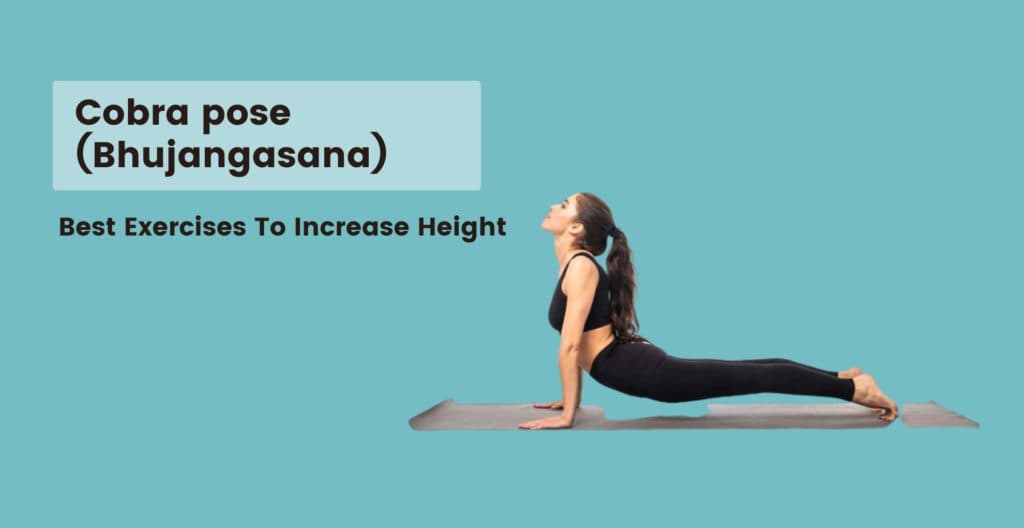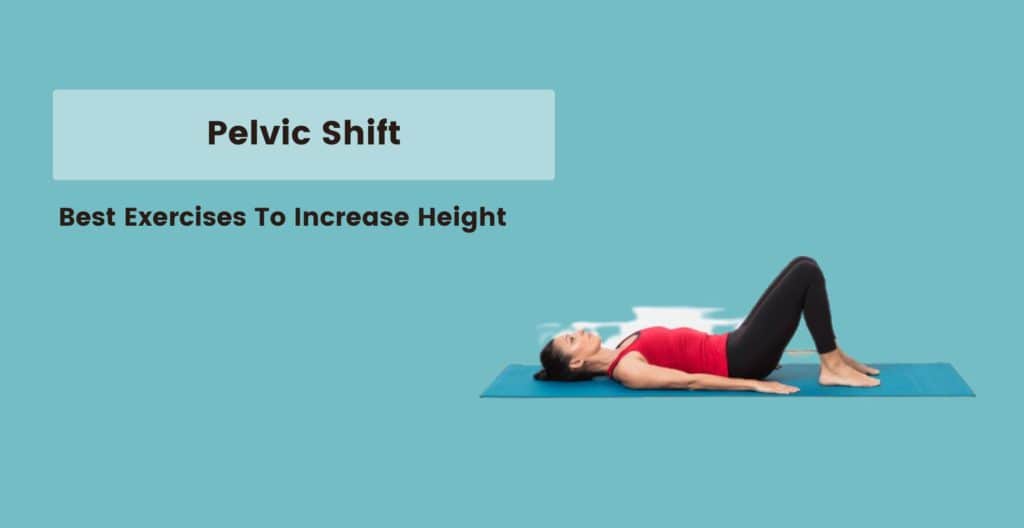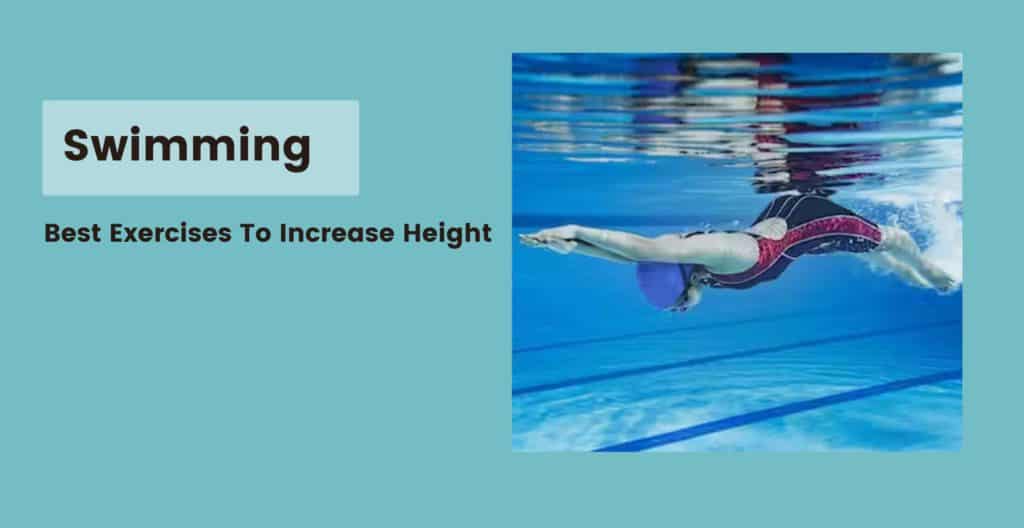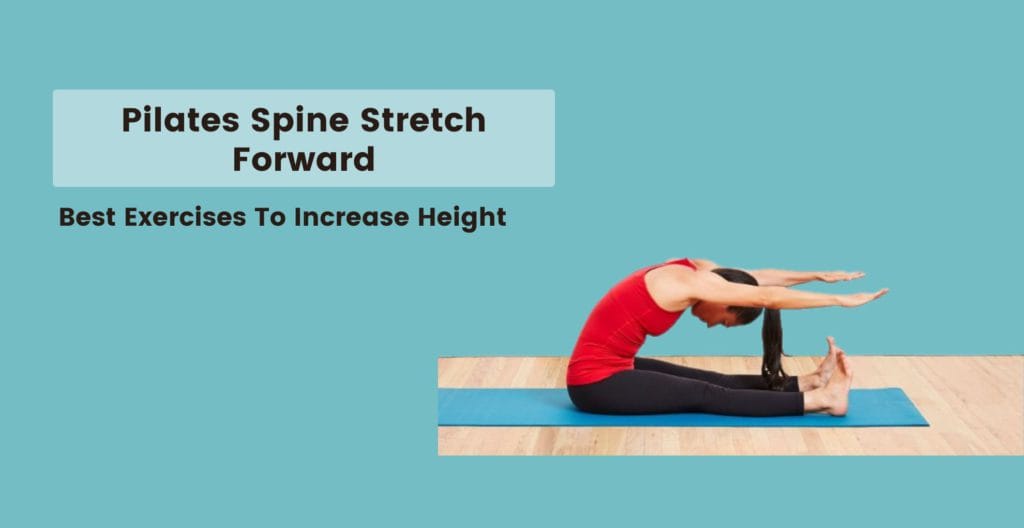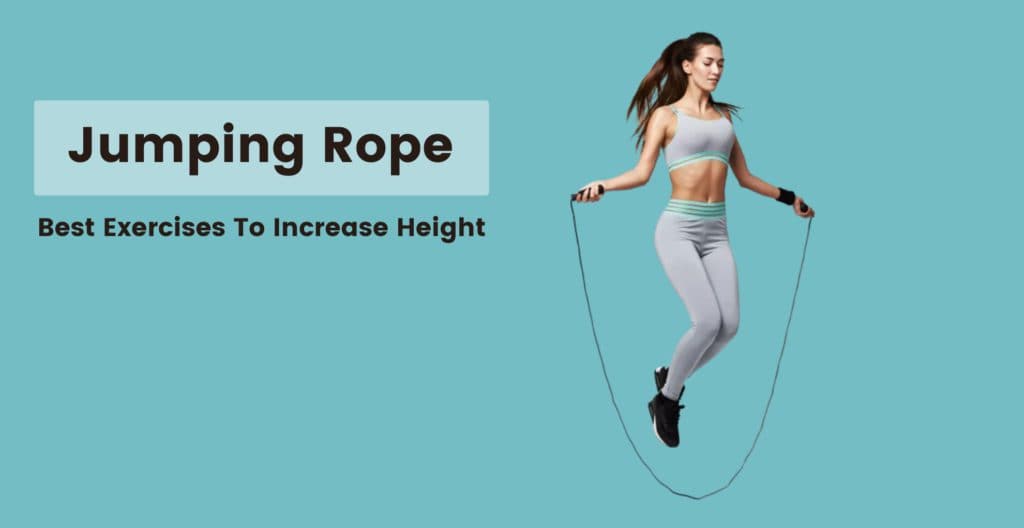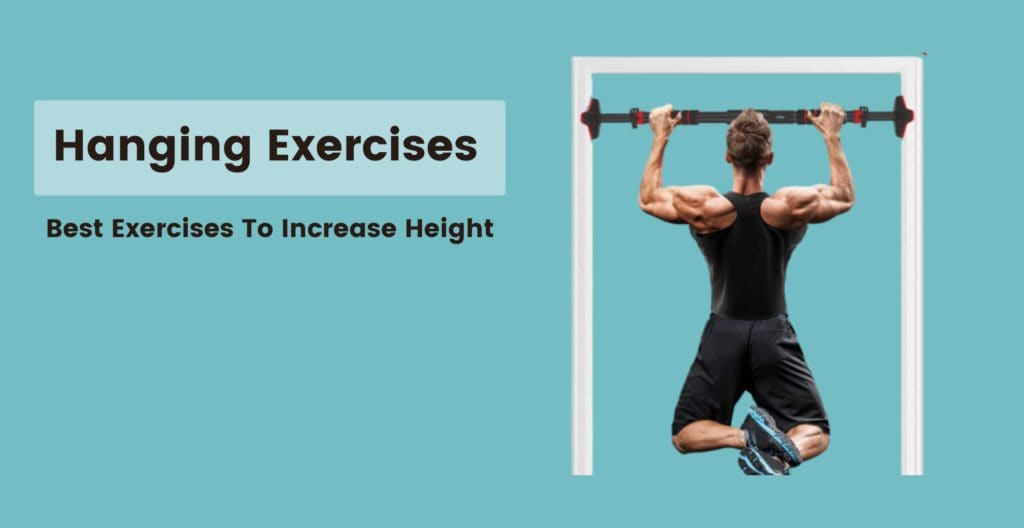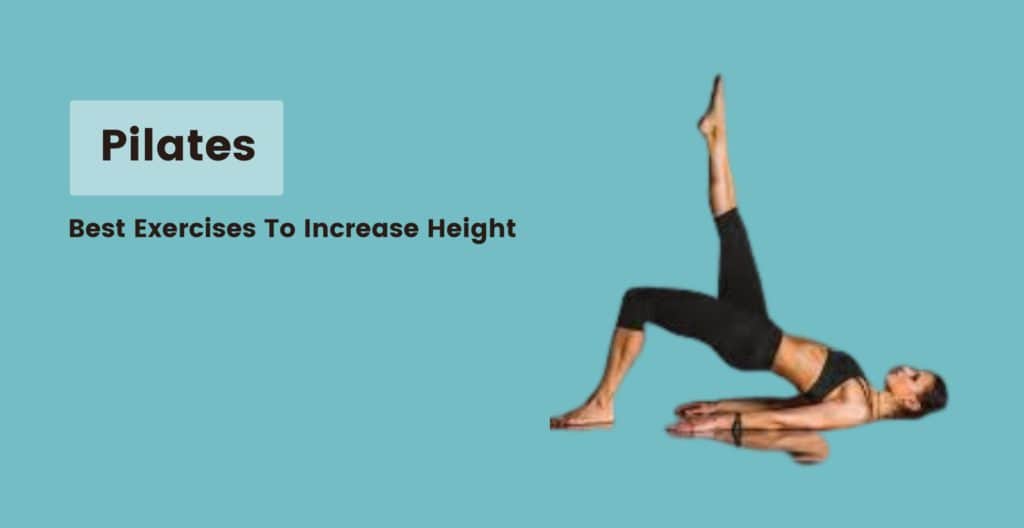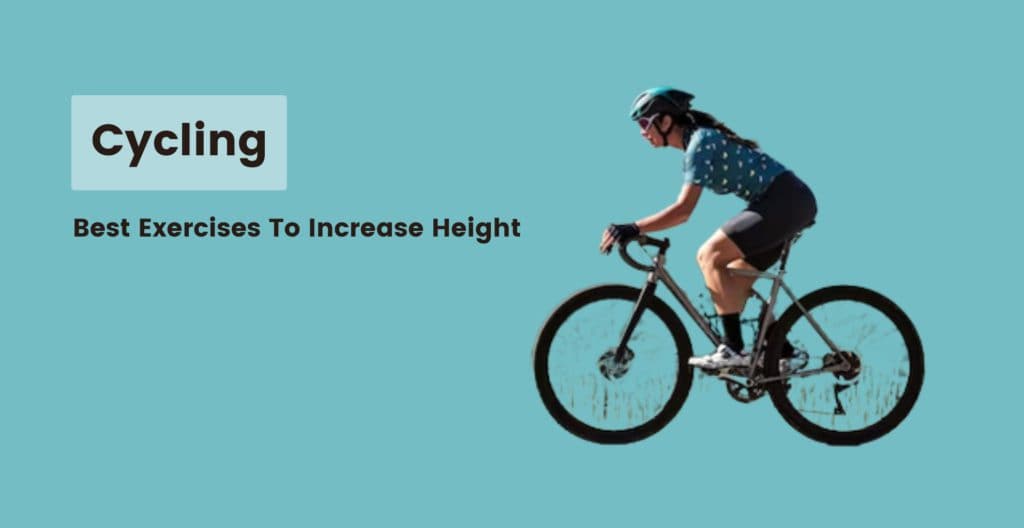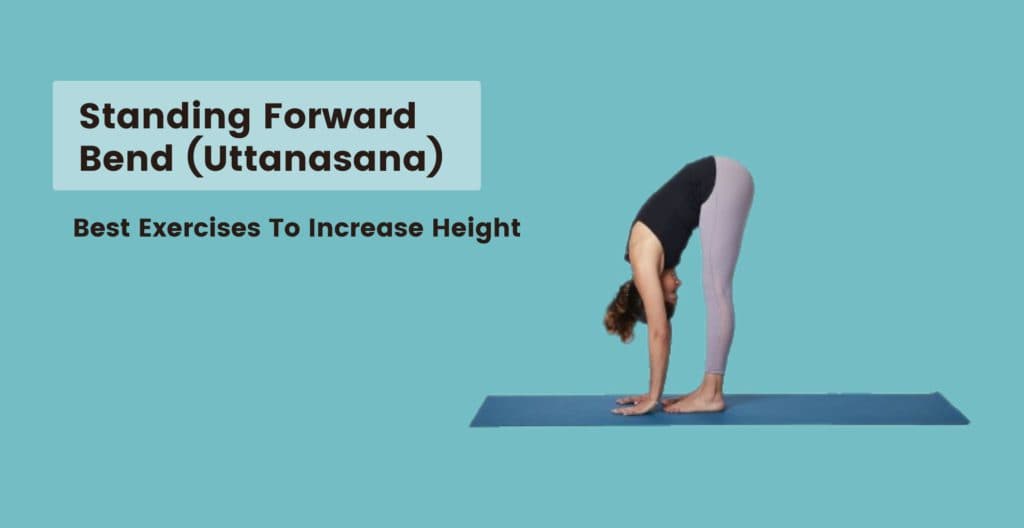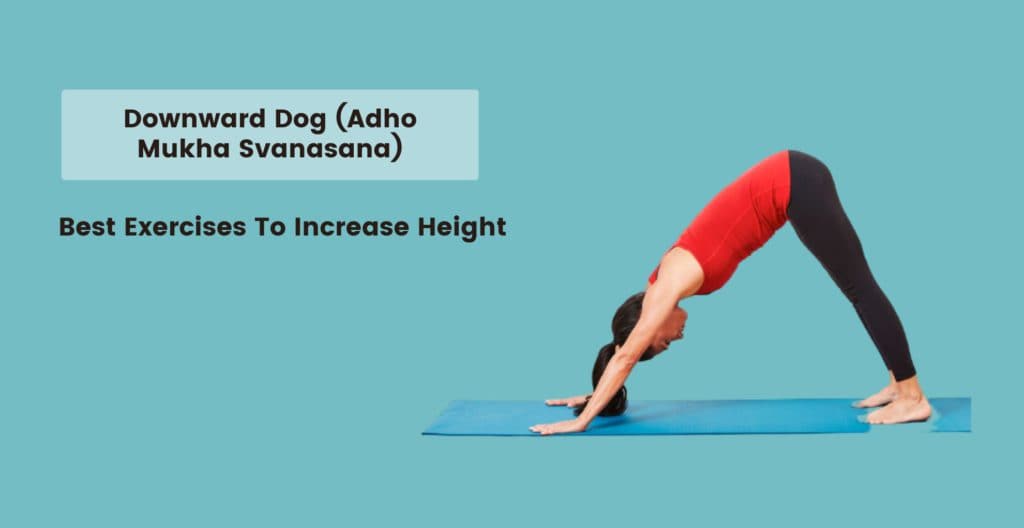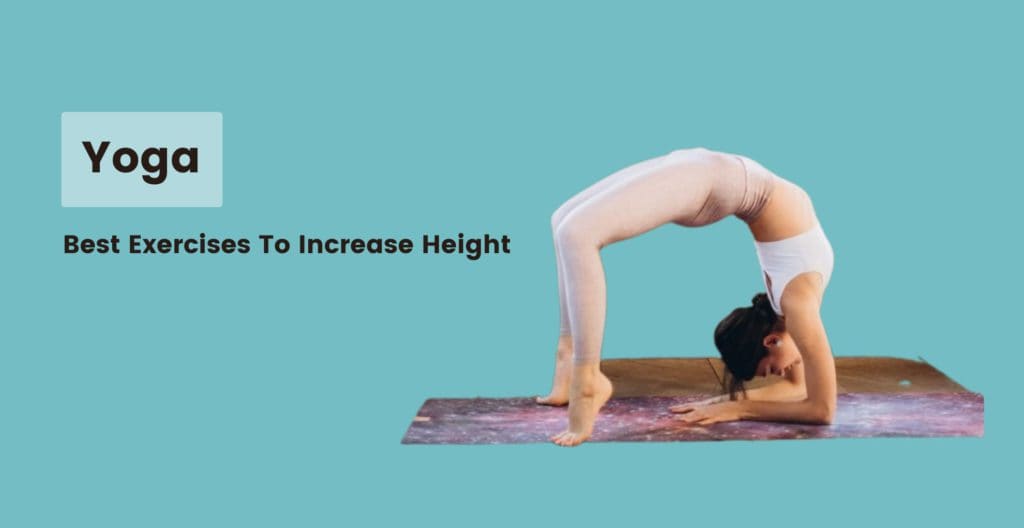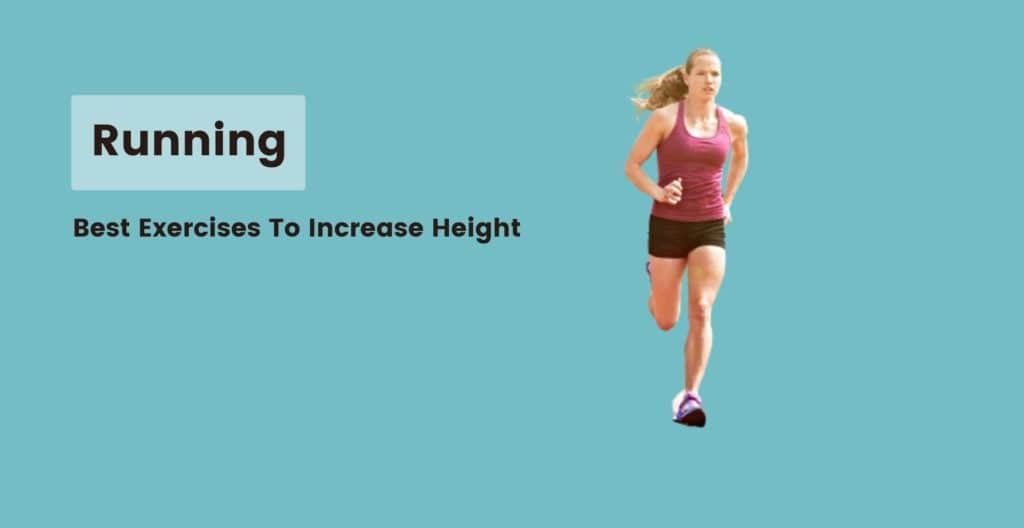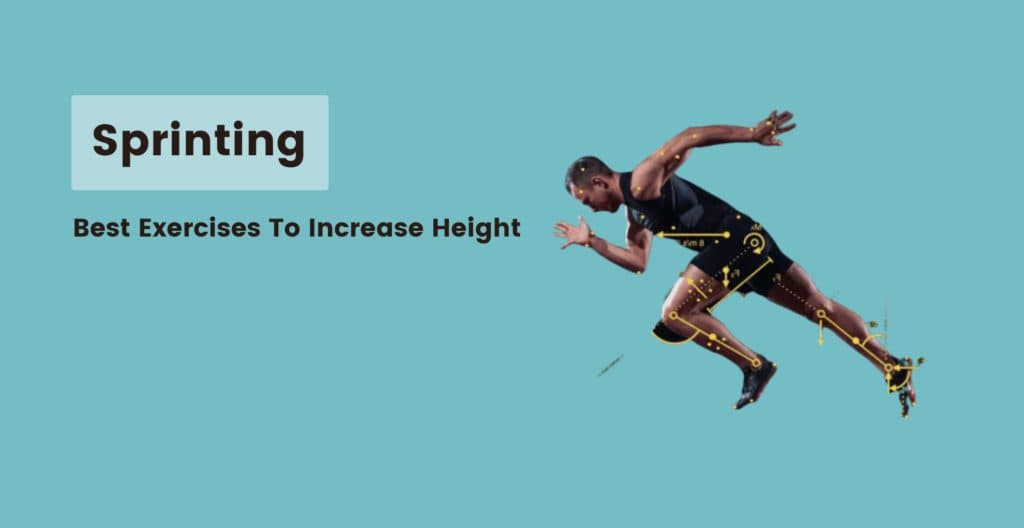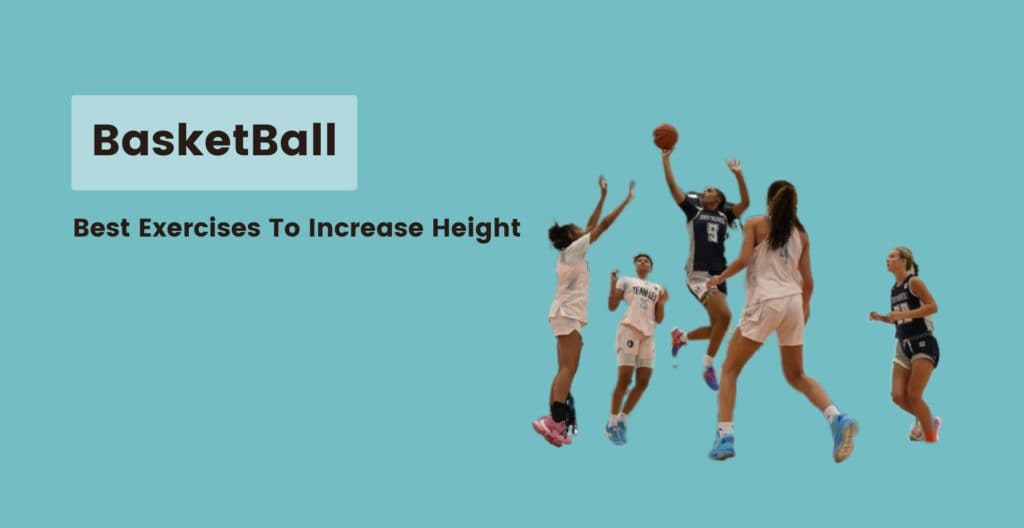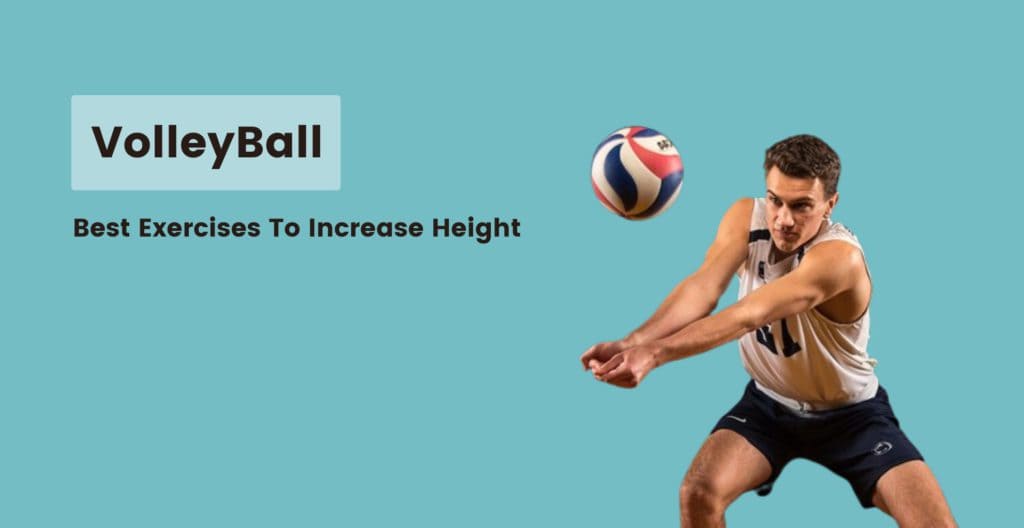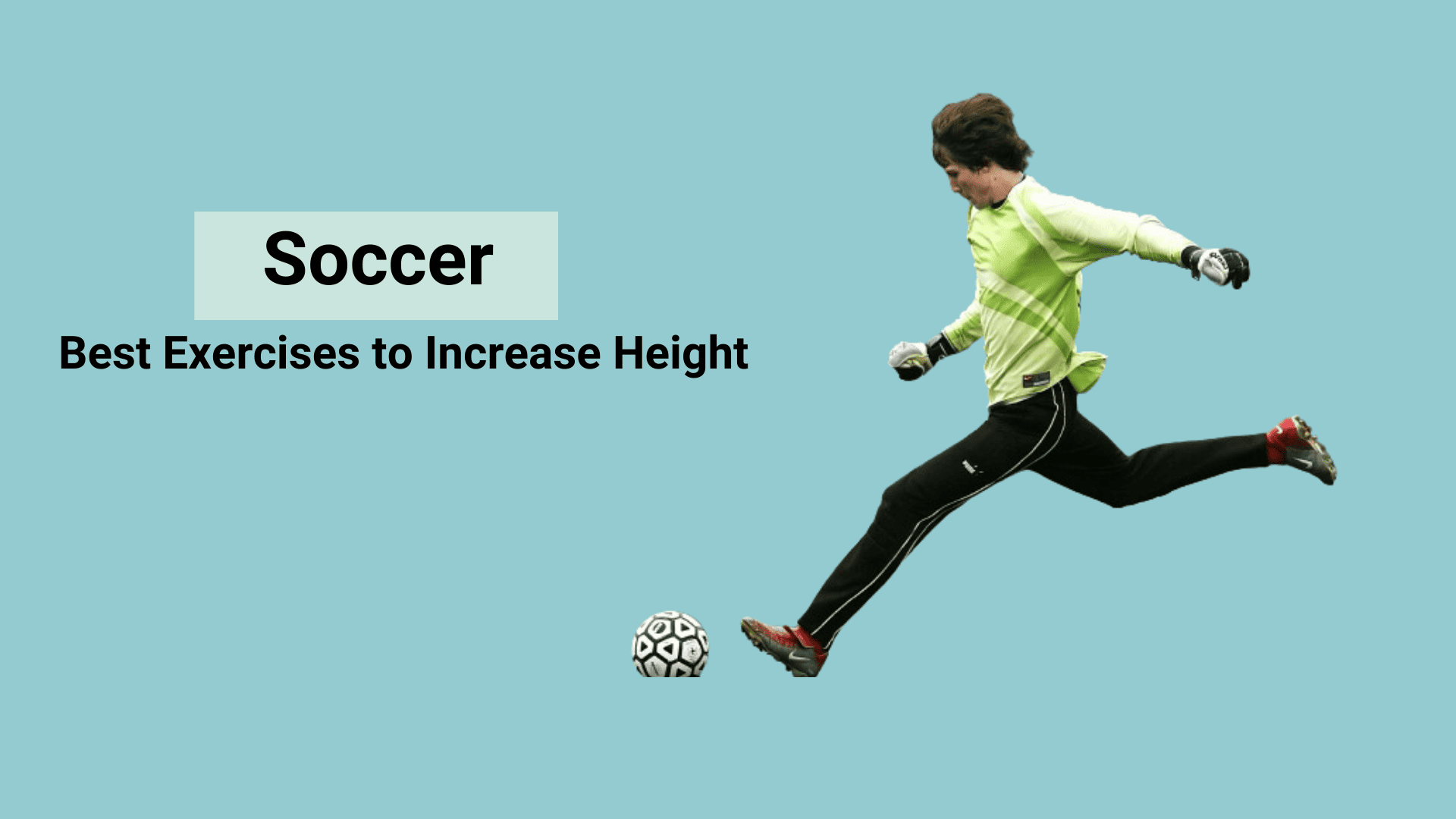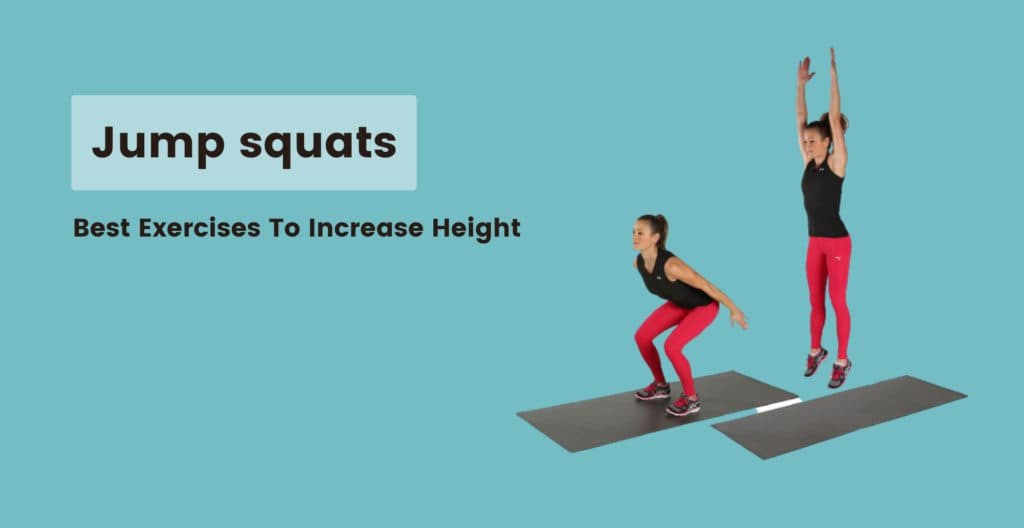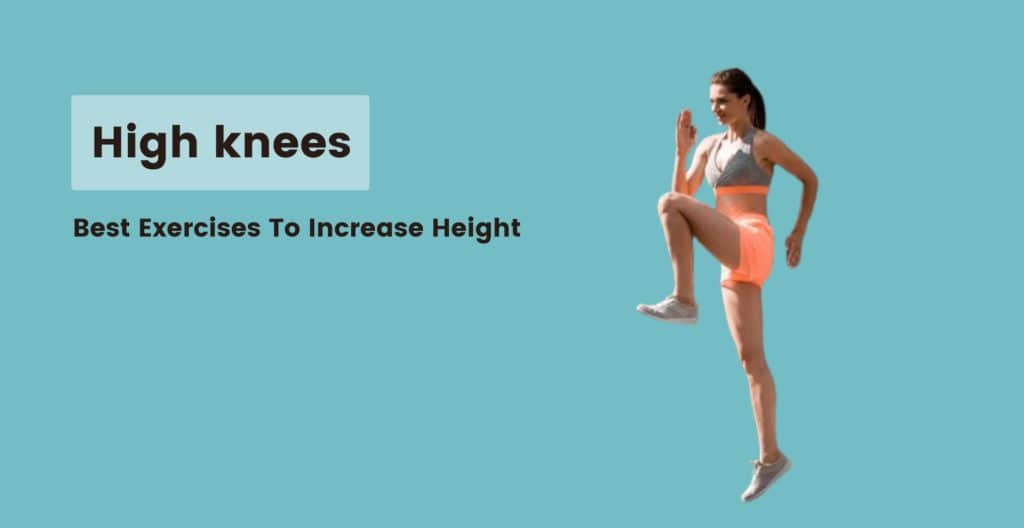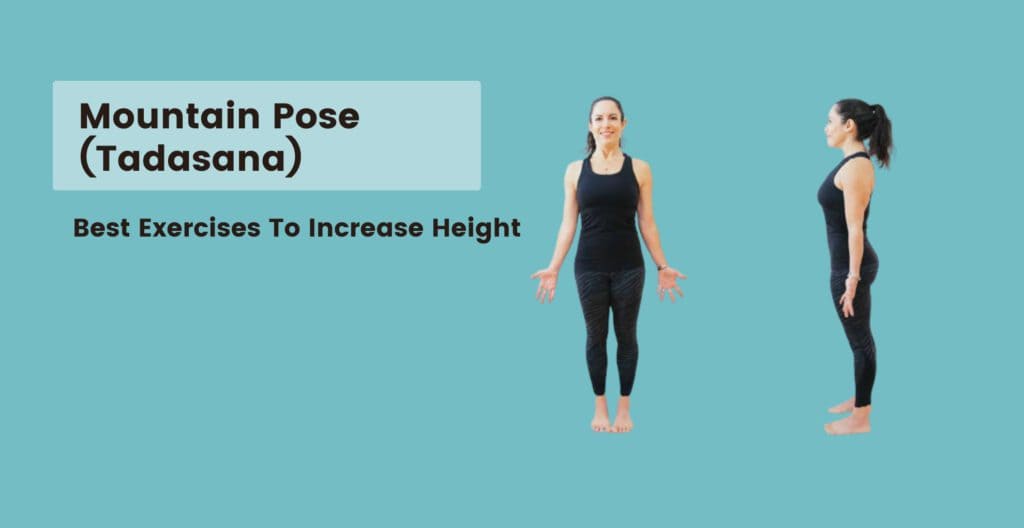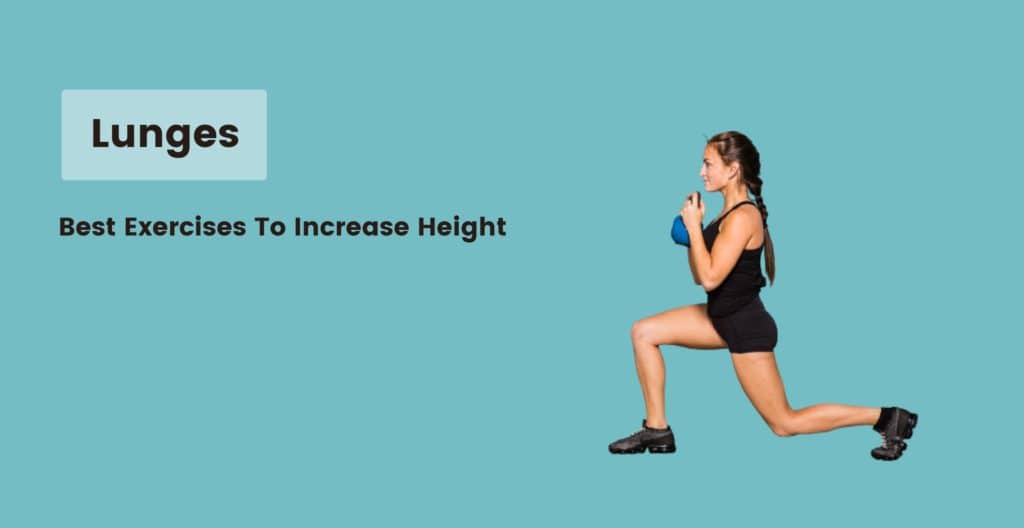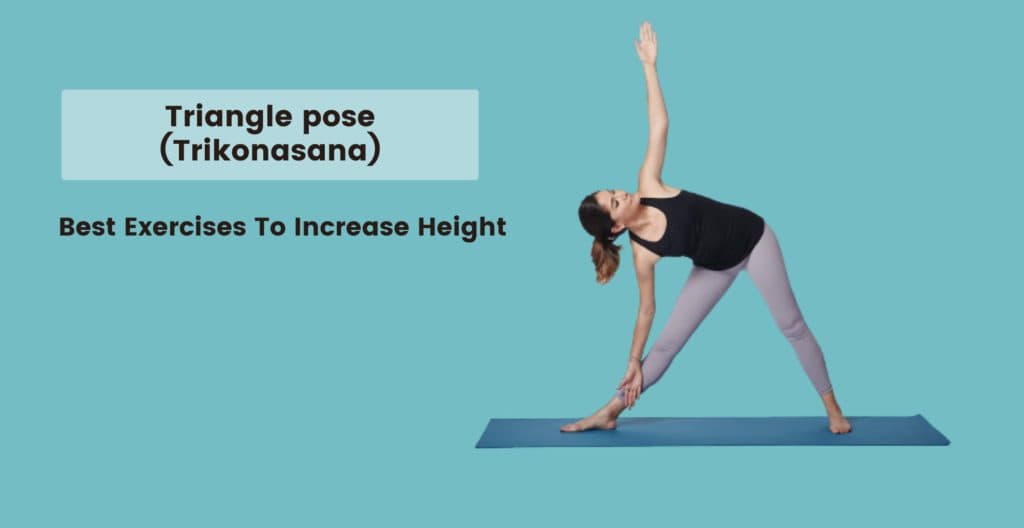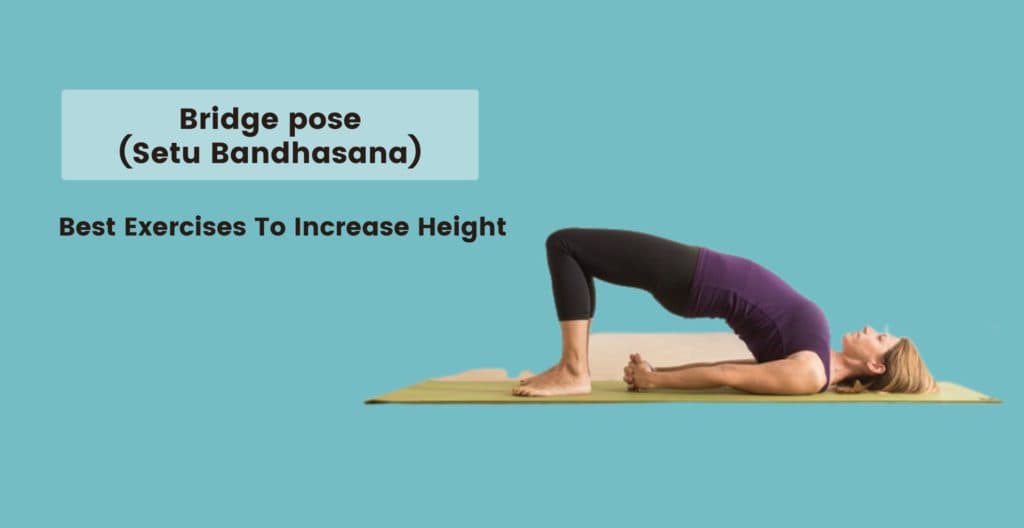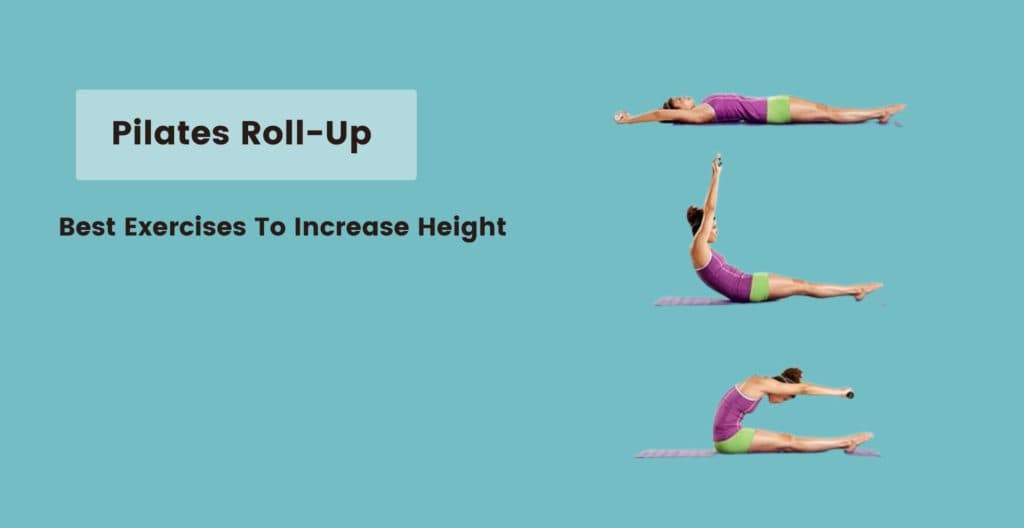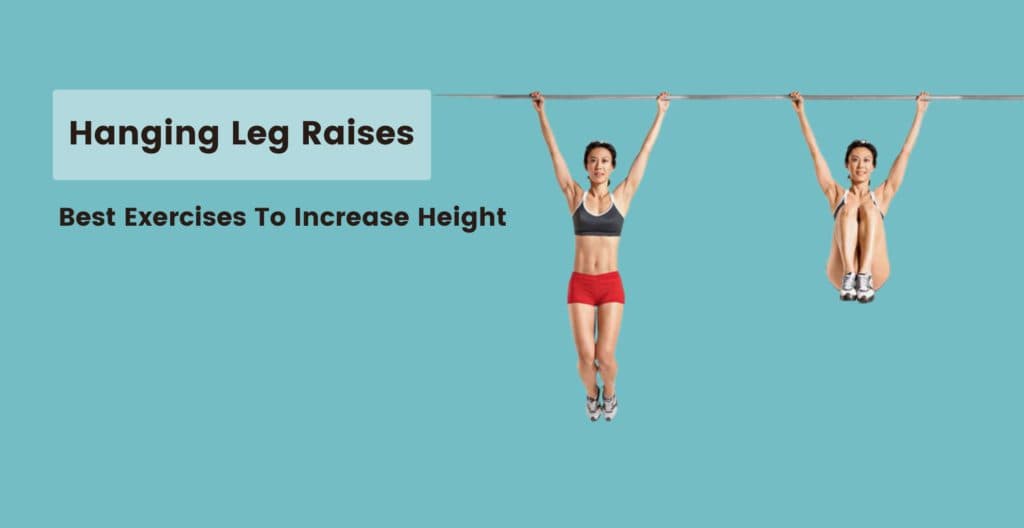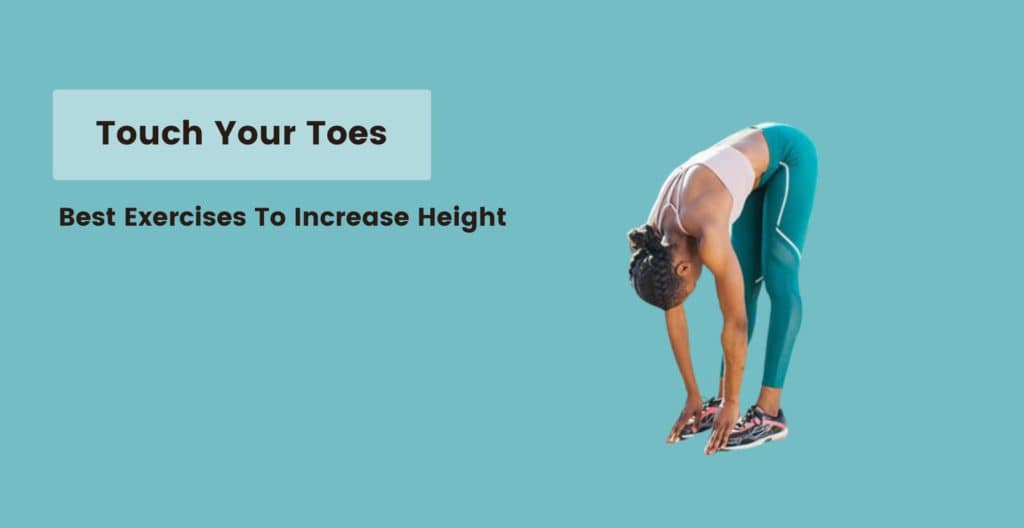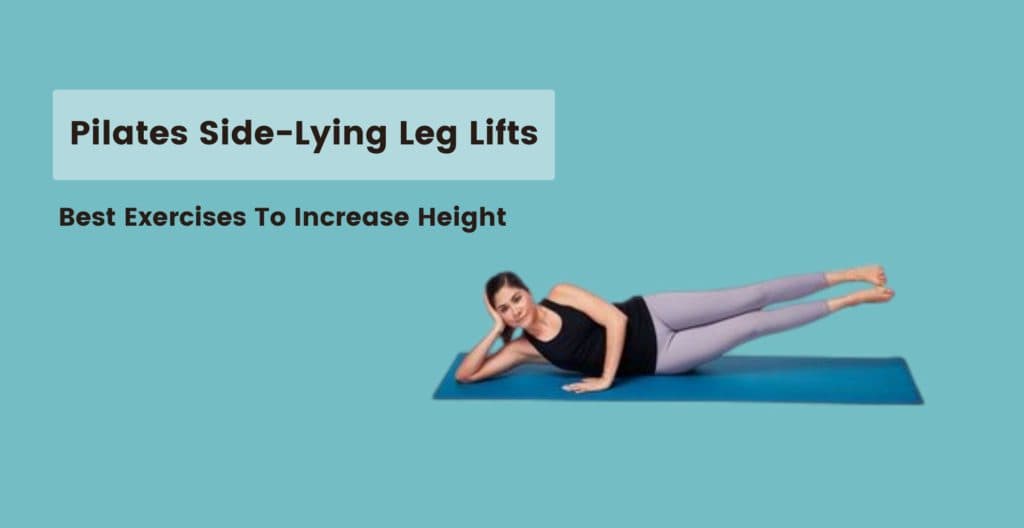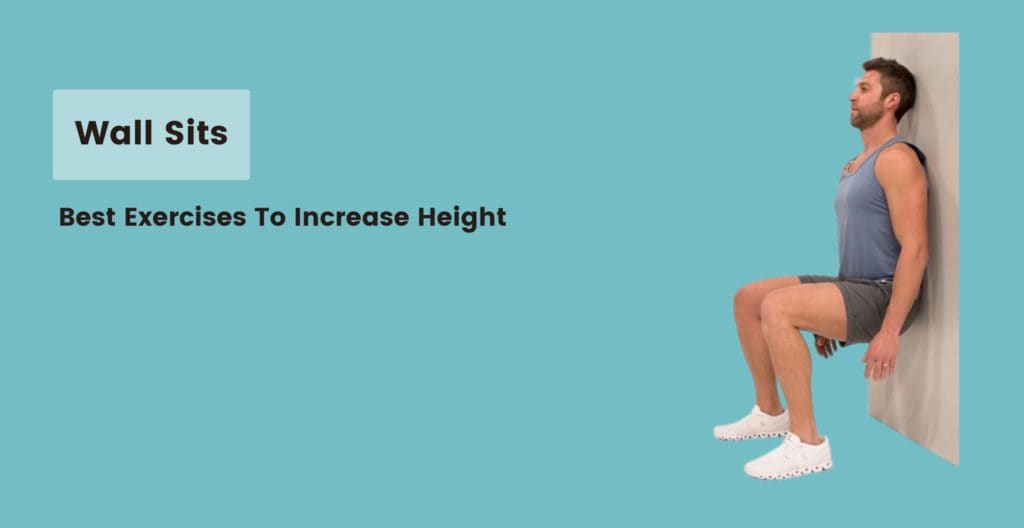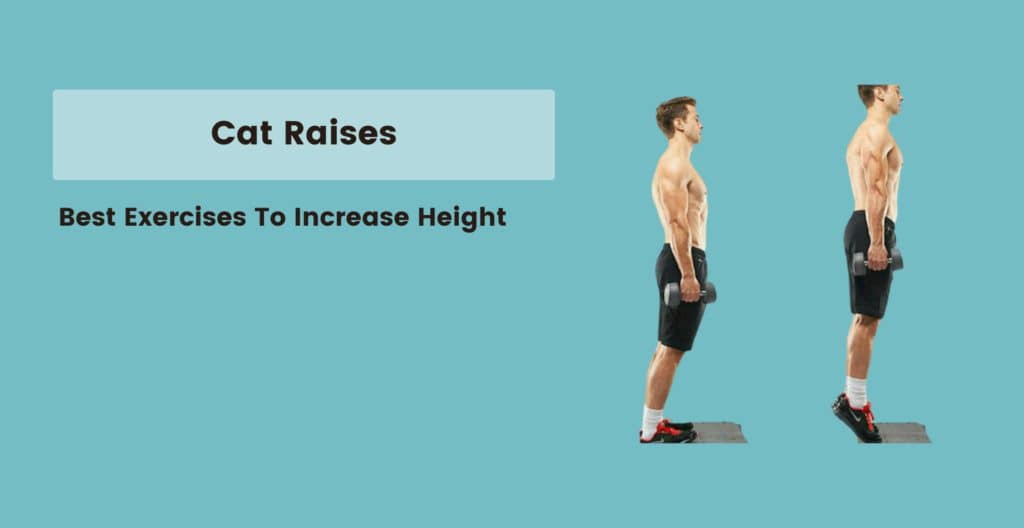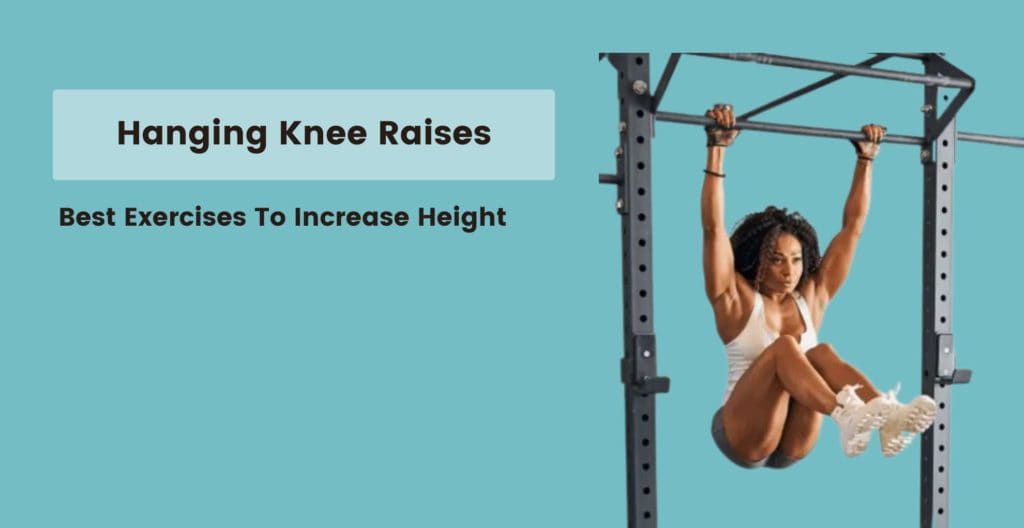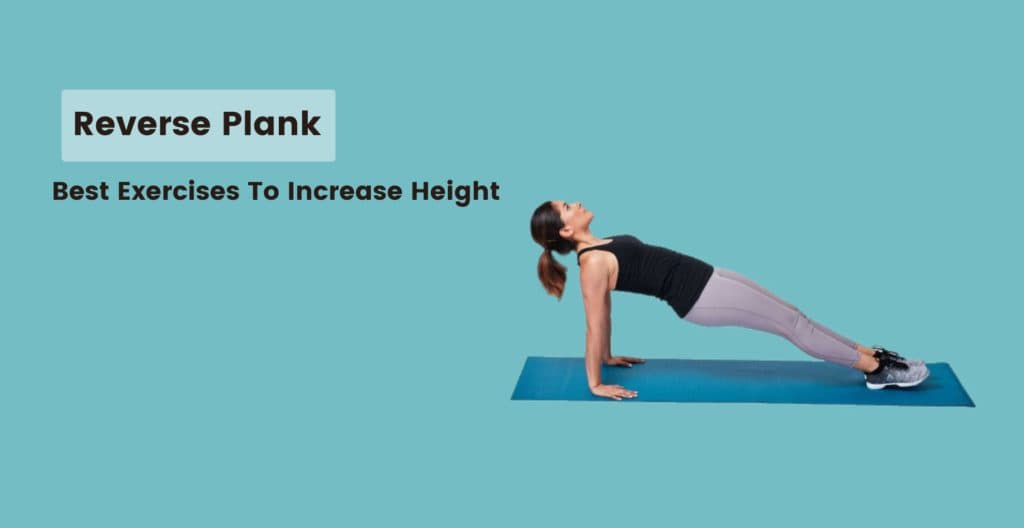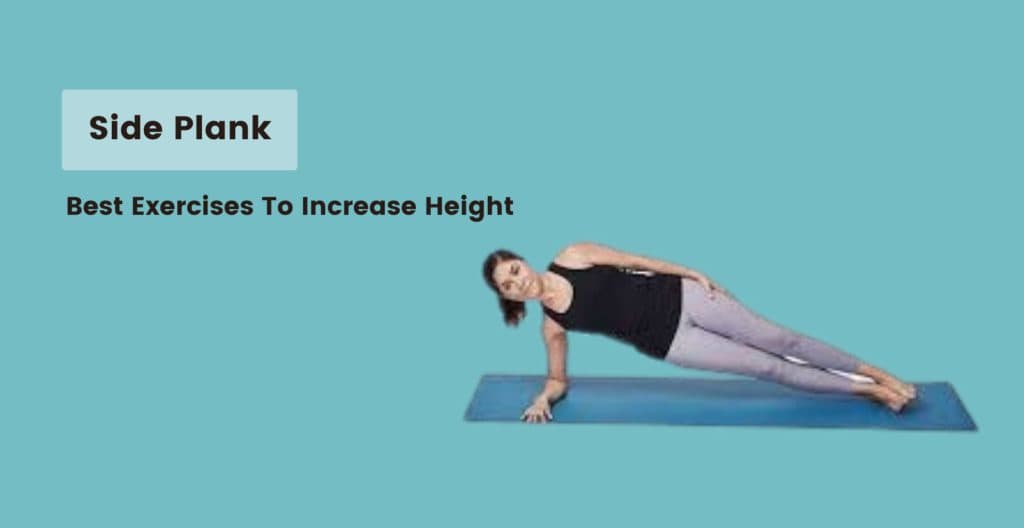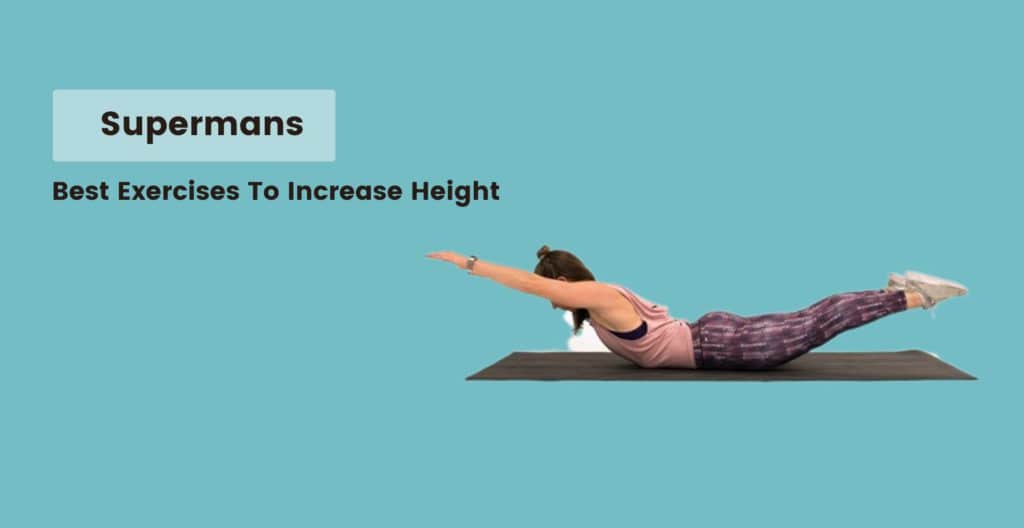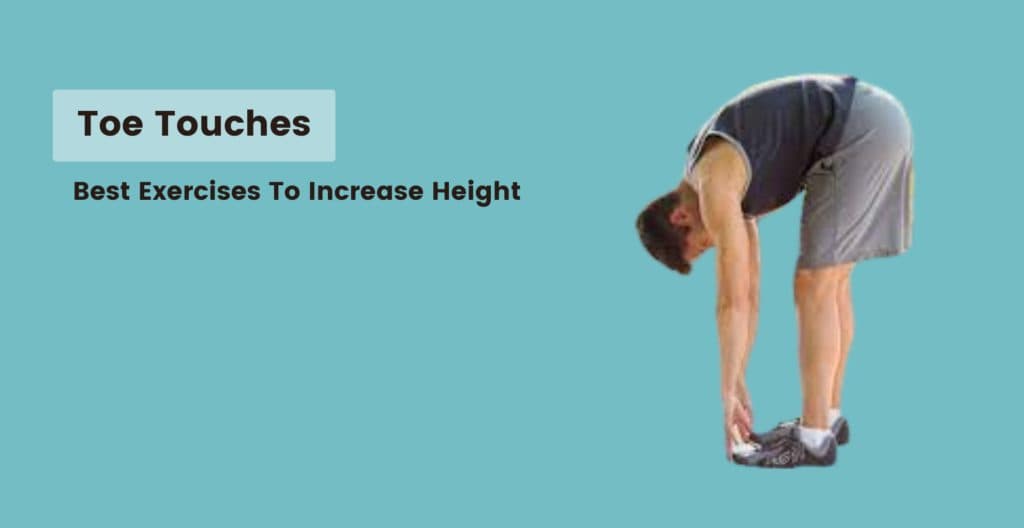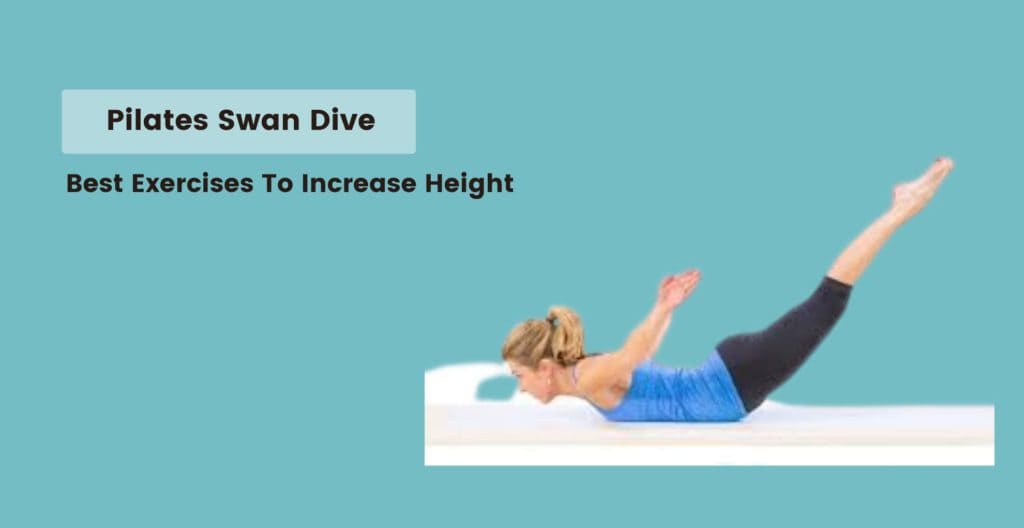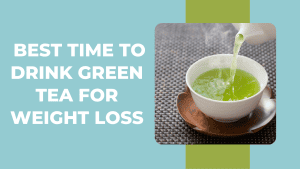Are you exhausted from racking your brains around finding a way out to the stuck height? If you are on a quest to look for ideas that might help to grow you some inches taller, we are here to pull you out of your misery. There are numerous exercises to increase height of an individual alongwith departing other benefits such as improving stamina, assisting in weight management and other health gains. Height is one of the most pronounced features that we put forth to the world and thus it’s only natural for us to be conscious about it. Improved nutritional intake, genetics and lifestyle are some of the factors that vastly influence height. Exercises play a vital role in the development of our overall health and by indulging in specific height increase exercise one can target muscles, bones, and spine, which would enable growth. Some of the height increase exercises include Jumping rope, Hanging exercises (e.g., pull-ups, chin-ups), Pilates, Swimming, Yoga or Cycling. Before we delve into the blog, let’s circle back to the fact that the determination of height largely depends on genetics and can be worked on mostly before touching adulthood. After 18, there are exercises that may help better your posture and make you appear taller, it might not actually be helpful in increasing the same. Continue reading to learn more on the best height increase exercise.
Can Exercises to Increase Height make you taller?
Height increase exercises can indirectly support height potential by targeting specific muscles, bones, and spine which promotes optimal growth conditions. Weight-bearing height exercises like jogging, jumping, and swimming stimulate bone health. If you regularly do stretching exercises for height, they help maintain flexibility and proper posture, making the most of your height. During puberty, growth plates close, limiting height increase. Height is influenced by factors like genetics, age, and gender. On average, males experience growth spurts later and have slightly more height potential than females. Hormones also play a crucial role in growth and so does adequate nutrition, sleep, and avoiding factors that hinder growth, like smoking, contribute to reaching your genetic height potential. Consulting a healthcare professional can guide you with height exercises and lifestyle choices for healthy growth. The average height of an Indian male is 165 cm whereas that of females is 152.58 cm.
How do Height Increase Exercises help to grow Taller?
While height increase exercises can be beneficial for overall health and well-being, it’s important to clarify that, height increase exercises are beneficial for most people, but it cannot alone significantly increase your height once you’ve reached your genetically determined height potential. Let us look at the advantages of the best exercise to increase height;
- Promotes Proper Growth and Development: Regular physical activity along with height increase exercises during childhood and adolescence can contribute to healthy bone development and muscle growth, which are essential for overall physical development.
- Stimulates Growth Hormones: While genetics mainly determine the secretion of growth hormones, some studies suggest that certain height increase exercises, particularly high-intensity activities like sprinting or jumping, may temporarily increase the production of growth hormone, which can be beneficial for growth during the developmental years.
- Strengthens Muscles and Bones: Regular weight-bearing height increase exercises, such as running, jumping, or resistance training, can strengthen muscles and bones, reducing the risk of injury and promoting overall physical health.
- Boosts Confidence and Self-Esteem: Engaging in regular stretching exercises for height can improve self-esteem and body image, which are essential for overall mental well-being.
Always consult with a healthcare professional before starting any height increase exercises program to ensure it is safe and appropriate for your individual needs and health status. If you have concerns about your height or growth, discussing them with a doctor can provide more personalized guidance.
10 Best Exercises to Increase Height
There’s an array of factors which influences and determines the height of an individual like environment, hormones, heredity, and diet. However, exercises do help in increasing the height by targeting certain muscles, bones, and spine which facilitates the conditions that are optimal for growth and development. Forward bend, bar hanging, cobra stretch, wall stretch are some of the best exercises to increase height. The decompression that has been built upon vertebrae with time owing to gravity and bad posture can be reversed or eliminated through height increase exercise.
| Exercise Name | How It Helps |
| Forward Bend | Balances your Upper Body Height and Lower Body Help. |
| Bar Hanging | You stretch your spine while hanging which is good for the upper body height. |
| Cobra Stretch | Improves your overall posture and stimulates the growth hormones. |
| Wall Stretch | Empowers your bones and corrects your posture. |
| Dry Land Swimming | Strengthens your muscles and helps them grow to increase height. |
| Pelvic Lift | Strengthens your lower body height |
| Forward Spine Stretch | Empowers your leg muscles and improves blood circulation to the lower body. |
| Pilates Roll Over | Improves Flexibility by stretching the body. |
| Low Lunge Arch | Strengthens your upper body height which is quite challenging. |
| Side Stretches | Reverse the body compression and empowers your muscles. |
50 Simple Height Increase Exercises
Height increase exercises help in eliminating the bad posture and target muscles, bones and spine which promotes the medium and space for growth. Some of the height increase exercises include basketball, running, sprinting, jogging, pelvic shift or burpees. These exercises are not only helpful in increasing your height but they also offer a list of other health benefits like improving stamina, helping with weight management, reducing the risk of cardiovascular diseases and the like. Let’s explore the benefits of each of these exercises in greater detail below:
- Cobra pose (Bhujangasana)
- Pelvic Shift
- Swimming
- Pilates spine stretch forward
- Jumping rope
- Hanging exercises (e.g., pull-ups, chin-ups)
- Jogging
- Pilates
- Cycling
- Standing forward bend (Uttanasana)
- Downward Dog (Adho Mukha Svanasana)
- Yoga
- Running
- Sprinting
- Basketball
- Volleyball
- Soccer
- Jump squats
- High knees
- Mountain pose (Tadasana)
- Lunges
- Triangle pose (Trikonasana)
- Bridge pose (Setu Bandhasana)
- Pilates roll-up
- Hanging leg raises
- Touch your toes
- Pilates side-lying leg lifts
- Side lunges
- Wall sits
- Calf raises
- Hanging knee raises
- Plank
- Reverse plank
- Side plank
- Supermans
- Toe touches
- Leg swings
- Ankle circles
- Standing hip flexor stretch
- Child’s pose
- Seated forward bend
- Quadriceps stretches
- Hamstring stretches
- Seated spinal twist
- Neck stretches
- Shoulder stretches
- Lat stretches
- Pilates scissors
- Pilates swan dive
- Burpees
1. Cobra Pose (Bhujangasana)
Cobra Pose, or Bhujangasana, is a gentle backbend that stretches the front of the body, particularly the chest, abdomen, and shoulders. It also strengthens the spine and improves flexibility and helps you do other height increase exercises.
How to Do Cobra Pose?
- Starting Position: Lie face down on your mat with your legs extended. Place your palms on the floor directly under your shoulders, fingers spread wide and pointing forward. Keep your elbows close to your sides and your forearms perpendicular to the floor.
- Inhale and Lift: As you inhale, press your palms into the mat, and gently lift your head, chest, and upper abdomen off the floor.
- Shoulder Relaxation: Draw your shoulder blades down and back, opening your chest while keeping your shoulders away from your ears. Look straight ahead or slightly upward, keeping your neck aligned with your spine.
- Legs and Hips: Press the tops of your feet into the mat and engage your leg muscles. Keep your pubic bone rooted into the floor.
2. Pelvic Shift
The pelvic shift is a gentle stretching exercise for height that helps relieve lower back tension and improve flexibility in the hips and lower spine.
How to Do the Pelvic Shift?
- Starting Position: Lie on your back with your knees bent and feet flat on the floor, hip-width apart. Ensure your arms are by your sides, palms facing down, and your spine is in a neutral position.
- Pelvic Tilt: Inhale deeply, and as you exhale, tilt your pelvis upward, gently pressing your lower back into the floor.
- Hold the Tilt: Hold the position for a few seconds, feeling the stretch in your lower back.
- Release: Inhale again, and as you exhale, return your pelvis to the neutral position. Repeat the pelvic tilt for the desired number of repetitions.
3. Swimming
Swimming is another popular and enjoyable water-based exercise to get taller that offers a full-body workout while providing a refreshing and low-impact experience.
How to Swim?
- Get Comfortable in the Water: Start in the shallow end of a pool or a calm body of water where you can stand comfortably. Familiarize yourself with swimming rules, and learn to maintain a body position in the water, your head should be aligned with your spine.
- Breathing Technique and Basics: Inhale deeply before starting to swim. As you swim, turn your head to the side to breathe, allowing your mouth to come above the water while exhaling.
- Learn the Movements: Learn the arm and kicking movements. Try them while you stand on the edge of the pool and gradually practice them with the tube or a support and once gain confidence in the water, swim deeper.
4. Pilates Spine Stretch Forward
The Pilates Spine Stretch Forward is a stretching exercise that improves flexibility in the spine and hamstrings while promoting good posture.
How to Do Pilates Spine Stretch Forward?
- Starting Position: Sit tall on a mat with your legs extended in front of you and your feet flexed. Reach your arms forward, parallel to the ground, at shoulder height.
- Inhale and Exhale: Inhale deeply, lengthening your spine. Then exhale as you start to roll your spine forward, leading with your head and neck, and reaching your arms toward your feet.
- Forward Bend: Imagine yourself folding in half at the hip crease as you reach for your toes.
- Breathing: Breathe deeply and evenly as you hold the stretch for a few breaths.
5. Jumping Rope
Jumping rope, also known as skipping rope, is a popular and effective height exercise that involves jumping over a rope as it passes under your feet.
How To Do Jumping Rope?
- Choose the Right Rope: Get a rope that fits your height and fitness level. Ensure that you jump on a non-slip surface.
- Proper Form: Hold handles firmly and stand tall with elbows close to the sides. Swing the rope over your head and under your feet as you jump lightly.
- Use Your Wrists: Rotate the rope using your wrists, and remember you don’t have to twist your whole arms. Begin with both feet together and find a comfortable rhythm. Then, try jumping on one foot at a time as you get better.
6. Hanging Exercises (Pull-Ups, Chin-Ups)
Hanging exercises such as pull-ups and chin-ups are effective upper-body strengthening exercises to increase height that primarily target the muscles in the back, shoulders, and arms. These exercises require a stable overhead bar or pull-up bar to perform.
How to Do Pull-Ups And Chin-Ups?
- Starting Position: Stand below the pull-up bar your hands should be shoulder-width apart or slightly wider. Then hang from the bar feet off the ground, and engage your core.
- Pull-Up: Inhale as you pull your body upward by bending your elbows, driving your shoulder blades down and back. Focus on pulling with your back muscles rather than using just your arms.
- Chin Above the Bar: Continue pulling until your chin is above the bar. Exhale as you lower your body back to the ground with control Repeat for the desired number of repetitions.
7. Jogging
Jogging is a form of aerobic exercise to increase height that involves running at a slow to moderate pace. It is an excellent cardiovascular workout that helps improve heart health and endurance.
How to Jog?
- Warm-up: Start with a brisk walk to warm up your muscles and prepare your body for jogging. Begin jogging at a comfortable pace, where you can maintain a steady and rhythmic stride.
- Breathing: Focus on steady breathing, inhaling through your nose and exhaling through your mouth. Keep your head up, shoulders relaxed, and arms bent at a 90-degree angle. Land on your feet with each stride.
- Pace and Duration: You can jog for a specific distance or time, depending on your fitness level and goals. After jogging, gradually slow down to a walk to allow your body to cool down.
8. Pilates
Pilates is a popular exercise to get taller that focuses on improving flexibility, strength, and body awareness. It involves a series of controlled movements that target the core muscles and other muscle groups, promoting proper alignment and mindful movement.
How to do Pilates?
- Starting Position: Lie on your back with your legs extended and your arms by your sides. Inhale deeply, and as you exhale, engage your core muscles by pulling your navel towards your spine.
- Leg Position: Lift both legs off the mat, keeping them together and straight. Your feet should be at about a 45-degree angle.
- Arm Position: Lift your head, neck, and shoulders off the mat, and reach your arms straight forward, just above the level of your hips. Keep your palms facing down.
- The Movement: Begin pumping your arms up and down with small, controlled movements while maintaining your core engagement. Inhale and exhale for 5-arm pumps. This completes one set of pilates.
9. Cycling
Cycling is an enjoyable and effective form of aerobic exercise that involves riding a bicycle. It is a popular outdoor activity and can also be done indoors on stationary bikes.
How to Cycle?
- Safety First: Always wear a helmet and other appropriate safety gear while cycling. Select a bike that fits your height and riding preferences.
- Maintain Posture: Keep your back straight and your shoulders relaxed while gripping the handlebars.
- Pedaling Technique: Use a circular pedalling motion, pushing down with one foot while pulling up with the other. Gradually reduce your pace towards the end of your ride to allow your body to cool down.
10. Standing Forward Bend (Uttanasana)
Standing Forward Bend, or Uttanasana, is a calming yoga pose that stretches the hamstrings, calves, and lower back. It is one of the best poses or exercises to increase height that promotes relaxation.
How to Do Standing Forward Bend?
- Starting Position: Stand tall with your feet together or hip-width apart, arms by your sides, and shoulders relaxed. Take a deep breath, lengthening your spine, and lifting your chest. As you exhale, hinge at your hips and bend forward from the waist, maintaining a straight back.
- Hand Placement: Place your hands on the floor beside your feet or hold onto your shins or ankles. Alternatively, you can interlace your fingers behind your legs.
- Relax Neck and Shoulders: Allow your head and neck to relax, and let gravity pull your upper body gently towards your legs.
11. Downward Dog (Adho Mukha Svanasana)
Downward Dog is a fundamental yoga pose that stretches and strengthens various muscles, including the shoulders, hamstrings, and calves. It is an exercise to get taller that promotes relaxation and rejuvenation.
How to Do Downward Dog?
- Starting Position: Begin on your hands and knees in a tabletop position, with your wrists aligned under your shoulders and knees under your hips. Spread your fingers wide and press your palms firmly into the mat.
- Tuck Toes: Tuck your toes under and lift your knees off the mat, straightening your legs to form an inverted “V” shape.
- Hip Positioning: Push your hips upwards and backwards, lengthening your spine. Press your heels toward the mat, but they don’t need to touch the ground.
- Shoulder Positioning: Draw your shoulder blades down and away from your ears, broadening your upper back. Breathe deeply and slowly, allowing your breath to flow smoothly as you hold the pose.
- Hold and Release: Hold the Downward Dog pose for a few breaths or longer, depending on your comfort level. To come out of the pose, bend your knees and lower them back to the mat, returning to the tabletop position.
12. Yoga
Yoga is an ancient practice that combines physical postures, breathing techniques, and meditation to promote physical, mental, and spiritual well-being. One can try their hands on various Yoga to Increase Height
How to Practice Yoga?
- Find a Quiet Space: Choose a peaceful and clutter-free area without distractions, then place a yoga mat on the floor to provide cushioning and grip for yoga poses.
- Follow a Sequence: Choose a yoga sequence or flow that suits your level of experience and fitness. You can follow guided videos or attend yoga classes. Pay attention to your breath throughout the practice, inhaling deeply and exhaling fully.
- Modify as Needed: Modify poses if necessary, especially if you are a beginner or have specific physical limitations. Be mindful of how your body feels during the practice and avoid pushing yourself too hard.
- Cool Down: End your yoga session with relaxation poses, such as Savasana (Corpse Pose), to allow your body to rest and absorb the benefits of the practice.
13. Running
Running is an accessible form of exercise to get taller that involves moving at a faster pace than walking. It helps improve cardiovascular fitness, burn calories, and boost overall endurance.
How to Run?
- Warm-up: Start with a brisk walk or slow jog to warm up your muscles and prepare your body for running.
- Start Slowly: Begin with a comfortable pace and gradually increase your speed as you get more comfortable. Focus on steady and controlled breathing, inhaling through your nose and exhaling through your mouth.
- Choose a Safe Route: Pick a safe and even surface for running to reduce the risk of injury. Pay attention to any signs of discomfort and take breaks as needed and slow down your to a walk and perform some gentle stretching exercises.
14. Sprinting
Sprinting is a high-intensity form of running that involves moving at your maximum speed for short distances. It is commonly used in various sports and can also be incorporated into a height growth exercise routine to improve speed and power.
How to Sprint?
- Warm-up: Before sprinting, warm up your muscles with light jogging and dynamic stretches. Start with running and then begin with a few short sprints and gradually increase the distance or duration as your body adapts.
- Recovery: Allow sufficient recovery time between sprints to prevent overexertion. Breathe deeply during the sprints to maintain oxygen flow.
- Cool Down: After sprinting, perform a cool-down routine, including light jogging and stretching.
15. Basketball
Basketball is a fast-paced team sport that involves dribbling, passing, shooting, and defending. It is an excellent exercise to get taller and improve cardiovascular fitness, agility, coordination, and teamwork.
How to Play Basketball?
- Learn the Rules: Familiarize yourself with the rules of basketball, including scoring, fouls, and time limits. Practice dribbling the ball with control using your fingertips, and switch hands as needed.
- Passing and Shooting: Work on different passing techniques, such as chest pass, bounce pass, and overhead pass. Develop shooting skills from various distances and angles, including layups, jump shots, and three-pointers.
- Defence and Teamwork: Practice defensive footwork and positioning to guard opponents effectively. Communicate with teammates, understand their positions, and work together to achieve common goals.
- Stay Active: Move constantly on the court, whether you have the ball or not, to create opportunities and support your team.
16. Volleyball
Volleyball is a team sport that is played on a rectangular court with a net in the middle. The objective is to send the ball over the net and into the opponent’s side, trying to prevent them from returning it.
How to Play Volleyball?
- Learn the Rules: Familiarize yourself with the rules of volleyball, including serving rotations, scoring, and net violations. Practice passing the ball with your forearms, keeping your hands together and your elbows straight.
- Serving: Work on serving overhand or underhand to start the game, aiming to land the ball in the opponent’s court.
- Spiking and Blocking: Practice spiking (hitting the ball downwards with force) to score points for your team. Learn blocking techniques to defend against your opponent’s attacks at the net.
- Communication: Work together with your teammates to anticipate movements and play strategically.
17. Soccer
Soccer, known as football in many countries, is a popular team sport played with a spherical ball. The objective is to score goals by getting the ball into the opponent’s net using any part of the body except the arms and hands (except for the goalkeeper).
How to Play Soccer?
- Learn the Rules: Understand the rules of soccer, including offside, fouls, and penalties. Practice accurate passing with both feet to move the ball around the field and involve your teammates.
- Shooting and Defending: Work on shooting techniques, using different parts of your foot for power and accuracy. Learn defensive positioning and tackling to win the ball back from the opponents.
- Goalkeeping (if applicable): If playing as a goalkeeper, practice positioning, diving, and handling the ball.
18. Jump Squats
Jump squats are one of the many height increase exercises that combines a traditional squat with an explosive jump, targeting the lower body muscles.
How to Do Jump Squats?
- Starting Position: Stand with your feet shoulder-width apart and your toes pointing slightly outward. Lower your body into a squat position by bending your knees and pushing your hips back, keeping your chest up and back straight.
- Explosive Jump: From the squat position, push through your feet, and explode off the ground, reaching your arms overhead. Land softly with bent knees to absorb the impact and go directly into the next squat.
- Repetition: Repeat the squat and jump motion for the desired number of repetitions. Ensure proper form to avoid injury.
19. High Knees
High knees are dynamic and effective cardiovascular height increase exercises that target the lower body while also engaging the core muscles. They are often used as warm-up exercises before more intense workouts.
How to Do High Knees?
- Stand Tall: Begin by standing with your feet hip-width apart, and keep your arms hanging down by your sides. Lift one knee towards your chest while simultaneously raising the opposite arm, as if you were running in place.
- Alternate Legs: Quickly switch legs and arms, pumping them up and down as you continue jogging on the spot. Aim for a fast and controlled tempo, lifting your knees as high as possible while keeping your core engaged.
- Land Softly: As you switch legs, land softly on the balls of your feet to reduce the impact on your joints. Keep your head up and your gaze forward, maintaining proper alignment in your neck and spine.
- Breathe: Focus on controlled breathing, taking deep breaths in and out as you perform the exercise. You can do high knees for a specific amount of time (e.g., 30 seconds to 1 minute) or a set number of repetitions (e.g., 20 repetitions per leg).
20. Mountain Pose (Tadasana)
Mountain Pose, or Tadasana, is a foundational one of the many yoga poses for a healthy Lifestyle that promotes body awareness, alignment, and grounding. It serves as a starting position for many other standing poses and height increase exercises.
How to Do Mountain Pose?
- Starting Position: Stand tall with your feet together or hip-width apart, your toes pointing forward, and your arms resting by your sides. Distribute your body weight evenly on both feet, feeling grounded and stable.
- Alignment: Align your head, shoulders, and hips in a straight line. Keep your spine elongated, and draw your belly button in slightly to engage your core. Relax your shoulders away from your ears, and keep your neck long without straining.
- Hand Placement: Either let your arms hang naturally by your sides or place your palms together at your heart centre in a prayer position.
21. Lunges
Lunges are one of the popular and effective lower body height increase exercises that target the quadriceps, hamstrings, glutes, and calf muscles. They also improve hip flexibility and stability.
How to Do Lunges?
- Starting Position: Stand tall with your feet together and your arms at your sides. Take a step forward with your right foot, and bend both knees to lower your body. Ensure your right knee is directly above your right ankle, and your left knee is hovering just above the floor.
- Upper Body: Keep your upper body upright, chest open, and shoulders relaxed. Make sure your front knee is at a 90-degree angle, and your back leg is forming a right angle at the knee.
- Core Engagement: Engage your core muscles for stability and balance.
- Step Back: Push off your right foot to step back and return to the starting position. Repeat the lunge on the other side by stepping forward with your left foot.
22. Triangle Pose (Trikonasana)
Triangle Pose is a standing yoga pose that stretches and strengthens the legs, hips, and spine. It also helps improve balance and core stability. This may help you in doing other height increase exercises.
How to Do Triangle Pose?
- Starting Position: Stand with your feet wide apart, with your toes pointing forward. Your heels should be aligned with each other. Extend your arms out to the sides, parallel to the ground, keeping them in line with your shoulders.
- Core Engagement: Engage your core, and lengthen your torso as you reach your right arm forward. Lower your right hand to your right shin, ankle, or the floor on the outside of your right foot. Keep your left arm extended upward.
- Gaze: Look up at your left hand, directing your gaze toward the ceiling or slightly forward. Ensure your chest and hips are open, with your body forming a straight line from the left hand to the right hand.
- Breathing: Breathe deeply and evenly as you hold the pose, for a few breaths or longer, feeling the stretch along the side of your body. Gradually release.
23. Bridge Pose (Setu Bandhasana)
Bridge Pose is a yoga asana that stretches and strengthens the back, glutes, and hamstrings while opening the chest and shoulders. It is also known for its ability to stimulate the thyroid gland and energize the body which can help you in doing other height increase exercises.
How to Do Bridge Pose?
- Starting Position: Lie on your back with your knees bent and feet flat on the floor, hip-width apart. Place your arms alongside your body, palms facing down. Ensure your heels are close to your sitting bones, almost touching them.
- Lift Hips: Inhale and press your feet firmly into the ground as you lift your hips and lower back off the floor. Use your glutes and hamstrings for the lift.
- Rolling the Shoulders: Roll your shoulders under your body, and clasp your hands together underneath your back. This position opens up your chest. Keep your neck and head relaxed, avoiding any strain.
- Thighs Parallel: Try to keep your thighs parallel to each other as you lift your hips. Breathe deeply and evenly as you hold the pose for a few breaths.
- Release: To come out of the pose, unclasp your hands, and slowly roll your spine back down to the mat, one vertebra at a time.
24. Pilates Roll-Up
The Pilates Roll-Up is one of the many height increase exercises that strengthen the core muscles while improving flexibility and spinal mobility.
How to Do Pilates Roll-Up?
- Starting Position: Sit on a mat with your legs extended straight in front of you and your feet flexed. Extend your arms forward, parallel to the floor, at shoulder height.
- Breathing: Inhale deeply, lengthening your spine and engaging your core. Exhale as you nod your chin to your chest, initiating the roll-up movement.
- Roll Your Spine: Slowly begin to roll your spine down towards the mat, one vertebra at a time, while keeping your core engaged. As you continue the roll-up, reach your arms forward toward your feet, attempting to touch your toes. Imagine yourself folding in half at the hip crease as you reach for your toes.
- Exhale and Roll Down: Exhale fully and reverse the movement, rolling your spine back up to the seated position. Sit up tall with a straight spine, and repeat the exercise for the desired number of repetitions.
25. Hanging Leg Raises
Hanging Leg Raises are advanced bodyweight height increase exercises that target the abdominal muscles, especially the lower abs.
How to Do Hanging Leg Raises?
- Starting Position: Hang from a pull-up bar or any stable horizontal bar with an overhand grip, palms facing away from you. Initiate the movement by engaging your core muscles and pulling your shoulder blades down and back.
- Leg Lift: Keeping your legs straight, raise them toward the ceiling or as high as you can while maintaining control. Lower your legs back down slowly and with control, avoiding swinging or using momentum.
- Breathing: Breathe naturally throughout the exercise, focusing on your core engagement. Perform the exercise for the desired number of repetitions, ensuring proper form and control.
26. Touch Your Toes
Touching your toes is a simple and effective stretching exercise to increase height that helps improve flexibility in the hamstrings and lower back.
How to Touch Your Toes?
- Starting Position: Stand tall with your feet together or hip-width apart, and keep your legs straight. Relax your shoulders, and let your arms hang naturally by your sides.
- Breathing: Take a deep breath, and lengthen your spine, reaching the crown of your head toward the ceiling. As you exhale, hinge at your hips and bend forward from the waist, keeping your back straight.
- Hand Placement: Reach your hands toward your toes or shins, depending on your flexibility. If you can’t touch your toes comfortably, go as far as you can without straining.
- Relax and Breathe: Relax your neck and shoulders, and breathe deeply into the stretch. Hold the stretch for a few breaths or longer, feeling the gentle stretch along your hamstrings and lower back.
27. Pilates Side-Lying Leg Lifts
Pilates Side-Lying Leg Lifts is one of the great exercises to increase height and strengthen the outer thighs (abductors) and hip stabilizing muscles.
How to Do Pilates Side-Lying Leg Lifts?
- Starting Position: Lie on your side with your legs extended in a straight line. Support your head with your bottom arm, and place your top hand on the floor in front of you for balance.
- Leg Lift: Inhale, engage your core, and lift your top leg upward without letting it come forward or backwards. Keep your hips stacked, and avoid rolling backwards.
- Controlled Lowering: Exhale as you lower your leg back down with control, keeping the movement smooth and steady.
- Repetitions: Perform the desired number of repetitions on one side before switching to the other side. If lifting the entire leg is challenging, you can do a smaller lift or place a soft prop under your bottom leg for support.
28. Side Lunges
Side lunges are a dynamic lower-body exercise to increase height that targets the inner and outer thighs, glutes, and hamstrings. They also help improve hip flexibility and balance.
How to Do Side Lunges?
- Starting Position: Stand tall with your feet together and your hands on your hips. Take a wide step to the right, shifting your body weight to your right foot, while keeping your left foot planted and your toes pointing forward.
- Lunge: Bend your right knee as you lower your body into a lunge position. Keep your left leg straight and your left foot firmly on the ground.
- Alignment: Ensure your right knee is directly above your right ankle, and your back is straight. Push off your right foot, return to the starting position, and repeat the lunge on the left side.
- Breathing: Inhale as you step to the side and prepare for the lunge, and exhale as you push off and return to the starting position.
29. Wall Sits
Wall sits are isometric height increase exercises that target the quadriceps, glutes, and calves, helping to build strength and endurance in the lower body.
How to Do Wall Sits?
- Starting Position: Stand with your back against a wall and your feet about hip-width apart, a few feet away from the wall. Slide your back down the wall as you bend your knees, until your thighs are parallel to the ground. Your knees should be at a 90-degree angle.
- Alignment: Ensure your knees are directly above your ankles, and your back is flat against the wall. Hold the wall sit position for as long as you can, aiming for 30 seconds to 1 minute.
- Breathing: Breathe deeply and evenly throughout the exercise. Push through your heels and stand back up to the starting position.
30. Calf Raises
Calf raises are a simple yet effective height increase exercises that targets the calf muscles, which are essential for walking, running, and jumping.
How to Do Calf Raises?
- Starting Position: Stand tall with your feet hip-width apart. Lift your heels off the ground by pushing through the balls of your feet.
- Hold the Top Position: Hold the raised position for a moment to feel the contraction in your calves.
- Lower Down: Lower your heels back to the ground slowly and with control. Repeat the calf raises for the desired number of repetitions.
31. Hanging Knee Raises
Hanging knee raises are an advanced abdominal exercise that targets the lower abs and hip flexors.
How to Do Hanging Knee Raises?
- Starting Position: Hang from a pull-up bar or any stable horizontal bar with an overhand grip, palms facing away from you. Initiate the movement by engaging your core muscles and pulling your shoulder blades down and back.
- Knee Lift: Bend your knees and lift them toward your chest as high as you can, engaging your lower abs. Lower your knees back down slowly and with control, avoiding swinging or using momentum.
- Breathing: Breathe naturally throughout the exercise, focusing on your core engagement. Perform the exercise for the desired number of repetitions.
32. Plank
The plank is a classic core-strengthening exercise to increase height that engages multiple muscles, including the abs, back, shoulders, and glutes.
How to Do Plank?
- Starting Position: Begin in a push-up position with your hands directly under your shoulders and your toes on the ground. Keep your body in a straight line from head to heels, engaging your core for stability.
- Forearm Plank (Option): For a variation, you can lower down onto your forearms instead of being on your hands. Hold the plank position for as long as you can, aiming for 30 seconds to 1 minute.
- Release: Lower your knees to the ground to come out of the plank position.
33. Reverse Plank
The reverse plank is another challenging height-increase exercise that targets the posterior chain muscles, including the glutes, hamstrings, and lower back, while also engaging the core and shoulders.
How to Do Reverse Plank?
- Starting Position: Sit on the mat with your legs extended in front of you, feet together, and toes pointing forward. Place your hands directly under your shoulders, with your fingers pointing forward.
- Lift Hips: Press through your palms and heels as you lift your hips off the ground. Ensure your shoulders are directly above your wrists and your body is in a straight line.
- Core Engagement: Engage your core to support your lower back. Hold the reverse plank position for as long as you can, aiming for 30 seconds to 1 minute. Lower your hips back down to the ground to come out of the reverse plank.
34. Side Plank
The side plank is one of the many excellent height increase exercises for targeting the obliques and the muscles on the sides of your body, providing stability and strength to the core.
How to Do Side Plank?
- Starting Position: Lie on your side with your legs extended straight, and stack your feet on top of each other.
- Alignment: Keep your body in a straight line from head to heels, engaging your core for stability. Hold the side plank position for as long as you can, aiming for 30 seconds to 1 minute on each side.
- Release: Lower your hips back down to the ground to come out of the side plank.
35. Supermans
Supermans are one of the many bodyweight height increase exercises that target the muscles of the lower back, glutes, and upper back.
How to Do Supermans?
- Starting Position: Lie face down on a mat with your arms extended forward and your legs straight. Inhale as you simultaneously lift your arms, chest, and legs off the ground.
- Alignment: Keep your neck in a neutral position, looking down toward the floor.
- Hold: Hold the lifted position for a moment, squeezing your glutes and lower back muscles. Exhale as you lower your arms and legs back down to the ground.
- Repetition: Repeat the exercise for the desired number of repetitions.
36. Toe Touches
Toe touches are a simple stretching exercise for height that targets the hamstrings and lower back, helping to improve flexibility in these areas.
Keep in mind that Toe touches and touching your toes are not the same exercises. Both are two of the best exercise to increase height and involve bending forward and reaching towards your toes.
How to Do Toe Touches?
- Starting Position: Stand tall with your feet together or hip-width apart. Relax your shoulders, and let your arms hang naturally by your sides. Take a deep breath, and lengthen your spine, reaching the crown of your head toward the ceiling.
- Exhale and Bend: As you exhale, hinge at your hips and bend forward from the waist, keeping your back straight. Reach your hands toward your toes or shins, depending on your flexibility. If you can’t touch your toes comfortably, go as far as you can without straining.
- Relax and Breathe: Relax your neck and shoulders, and breathe deeply into the stretch. Inhale, engage your core, and slowly rise back up to a standing position, keeping your back straight.
37. Leg Swings
Leg swings are a dynamic stretching exercise for height that involves swinging one leg or both legs back and forth in a controlled manner. This exercise helps improve flexibility, mobility, and range of motion in the hip and leg muscles.
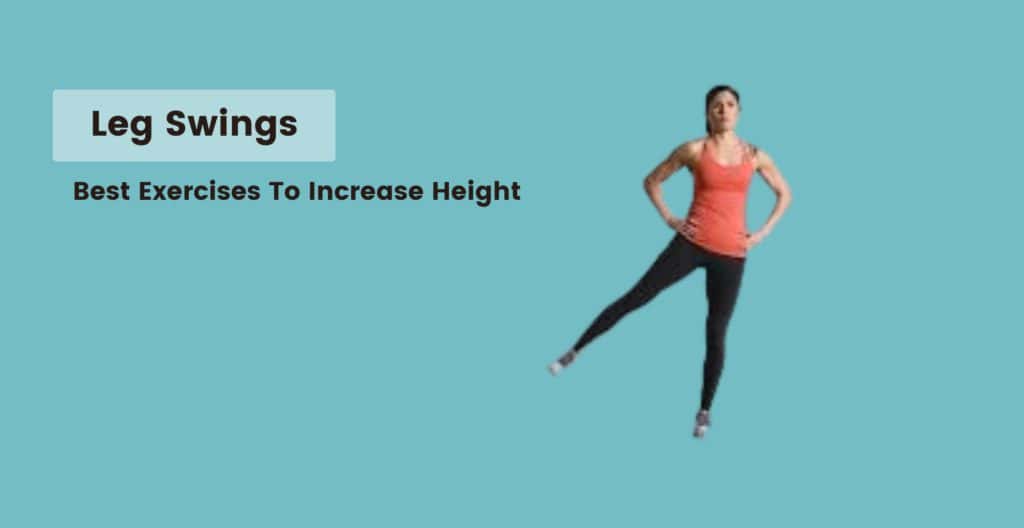
How to Do Leg Swings?
- Starting Position: Stand next to a wall or a sturdy object for balance, and place your hands on it for support. Swing one leg forward and backwards like a pendulum, focusing on keeping your upper body stable.
- Side Swing: Swing the same leg sideways, crossing it in front of your body and then to the side, like a gate.
- Reversal: After a set number of swings, switch to the other leg and repeat the exercise.
38. Ankle Circles
Ankle circles are simple and effective ankle mobility height increase exercises that involve moving your foot in a circular motion at the ankle joint.
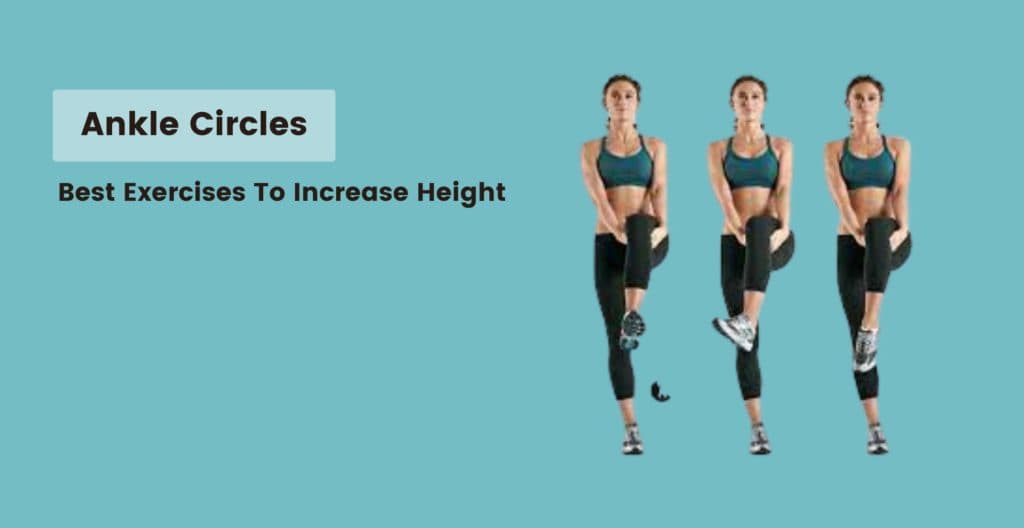
How to Do Ankle Circles?
- Starting Position: Sit or stand with your feet flat on the ground.
- Foot Positioning: Lift one foot off the ground, and extend it slightly in front of you.
- Ankle Circles: Rotate your ankle in a circular motion, moving clockwise and then counterclockwise. After a set number of circles, switch to the other ankle and repeat the exercise.
39. Standing Hip Flexor Stretch
The Standing Hip Flexor Stretch is stretching and one of the many height increase exercises that target the hip flexor muscles, particularly the muscles at the front of the hip and thigh.
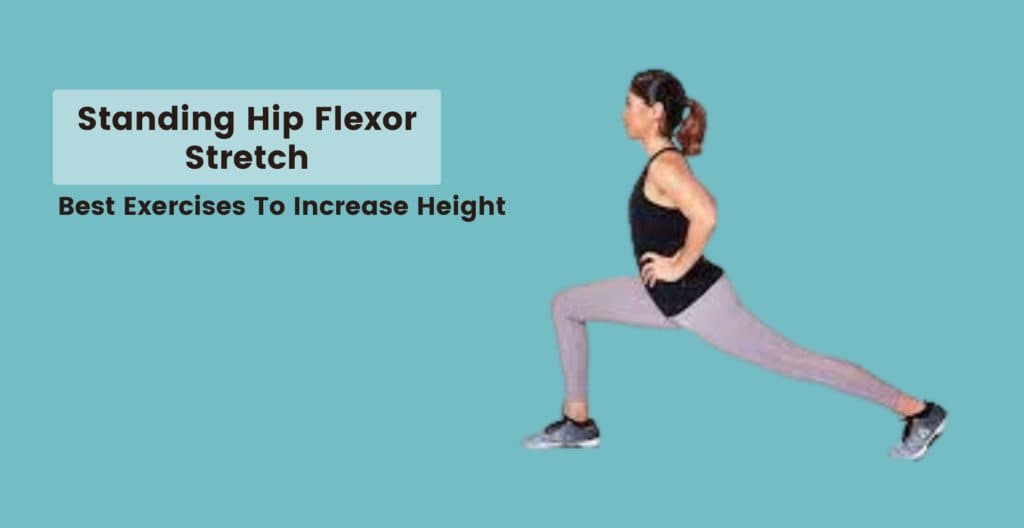
How to Do Standing
Hip Flexor Stretch?
- Starting Position: Stand tall with your feet together. Take a big step back with your right foot, and bend both knees to lower your body into a lunge position.
- Alignment: Ensure your left knee is directly above your left ankle, and your right knee is hovering just above the floor. Tilt your pelvis slightly forward to intensify the stretch in the front of your right hip.
- Hold: Hold the stretch for a few breaths, feeling the gentle stretch along the front of your right hip. Step the right foot forward and the left foot back to perform the stretch on the other side.
40. Child’s Pose
Child’s Pose is a yoga pose that is often used for relaxation and stretching. It is a gentle resting position that helps release tension in the back, shoulders, and hips, promoting a sense of calm and rejuvenation.
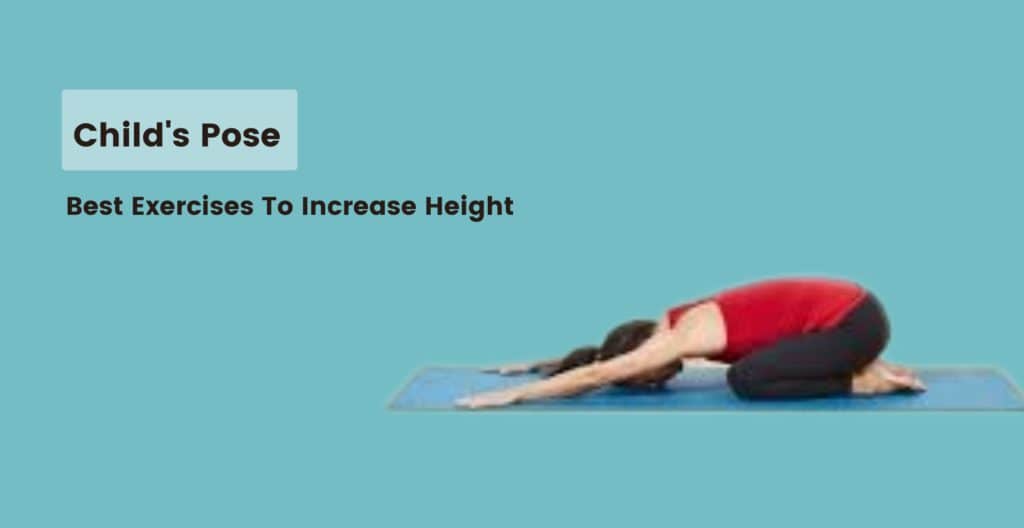
How to Do Child’s Pose?
- Starting Position: Kneel on the floor with your big toes touching and your knees hip-width apart. Sit back on your heels, and slowly lower your torso forward, resting it between your thighs.
- Hand Placement: Extend your arms forward on the mat, palms facing down. Rest your forehead on the mat or the floor, and let your neck relax.
- Breathing: Breathe deeply and evenly into your back as you hold the pose for a few breaths. To come out of the pose, walk your hands back toward your body, and slowly sit up.
41. Seated Forward Bend
The Seated Forward Bend is a yoga pose that stretches the entire back of the body, including the hamstrings, lower back, and spine. It is a calming and introspective pose that helps release tension, increase flexibility, and promote relaxation.
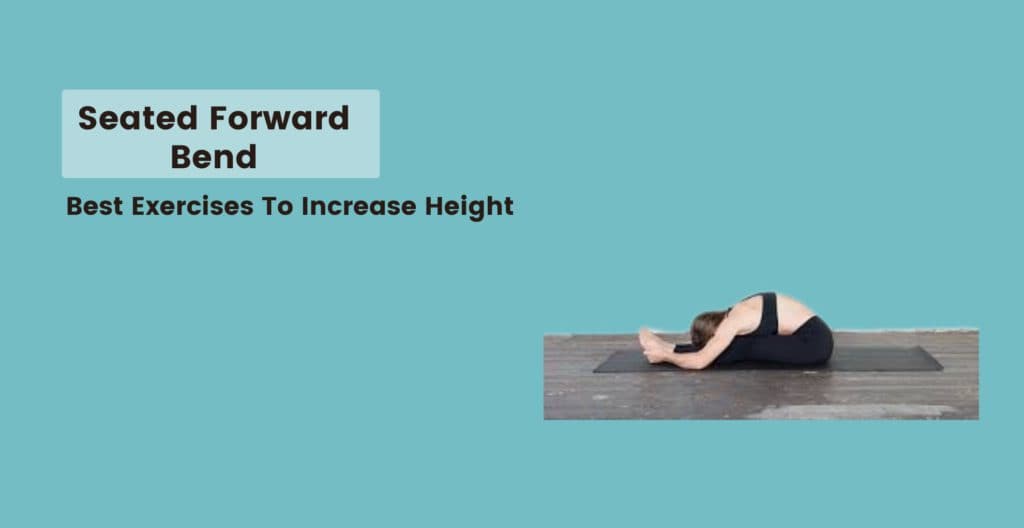
How to Do Seated Forward Bend?
- Starting Position: Sit on the mat with your legs extended in front of you, feet flexed, and knees slightly bent.
- Breathing: Inhale deeply, lengthening your spine. Exhale as you hinge at your hips and bend forward from the waist, reaching for your toes or shins.
- Forward Bend: Imagine yourself folding in half at the hip crease as you reach for your toes. Breathe deeply and evenly as you hold the stretch for a few breaths.
42. Quadriceps Stretches
Quadriceps stretches target the muscles at the front of the thigh, known as the quadriceps muscles. These stretches are one of the best exercises to increase height that improve flexibility in the quadriceps.
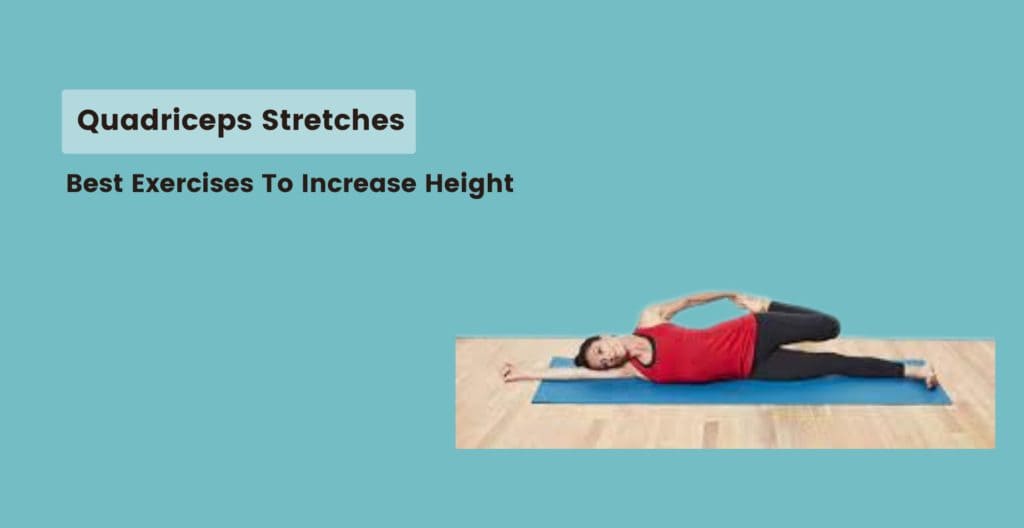
How to Do Quadriceps Stretches?
- Starting Position: Stand tall with your feet together. Shift your weight to your right foot, and bend your left knee, bringing your heel toward your buttocks.
- Hand Placement: Grasp your left ankle with your left hand, keeping your knees close together. Maintain your balance by engaging your core and keeping your knees close together.
- Hold: Hold the stretch for a few breaths, feeling the gentle stretch in your left quadriceps. Lower your left foot to the ground and perform the stretch on the other leg.
43. Hamstring Stretches
Hamstring stretches target the muscles at the back of the thigh, known as the hamstrings. These stretches are the best exercise to increase height and improve flexibility in the hamstring.
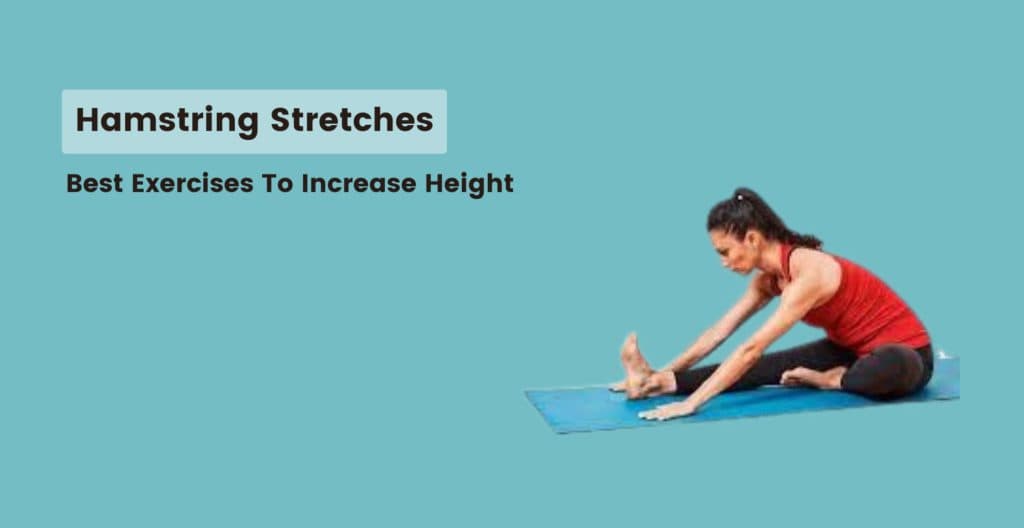
How to Do Hamstring Stretches?
- Starting Position: Sit on the mat with your legs extended in front of you, feet flexed, and knees slightly bent.
- Breathing: Inhale deeply, lengthening your spine. Exhale as you hinge at your hips and bend forward from the waist, reaching for your toes or shins.
- Forward Bend: Imagine yourself folding in half at the hip crease as you reach for your toes. Breathe deeply and evenly as you hold the stretch for a few breaths.
- Inhale and Sit Up: Inhale, engage your core and slowly sit up tall with a straight spine.
44. Seated Spinal Twist
The Seated Spinal Twist is a yoga pose that stretches and mobilizes the spine, shoulders, and hips. It is a twisting pose that helps release tension in the back and improve spinal flexibility.
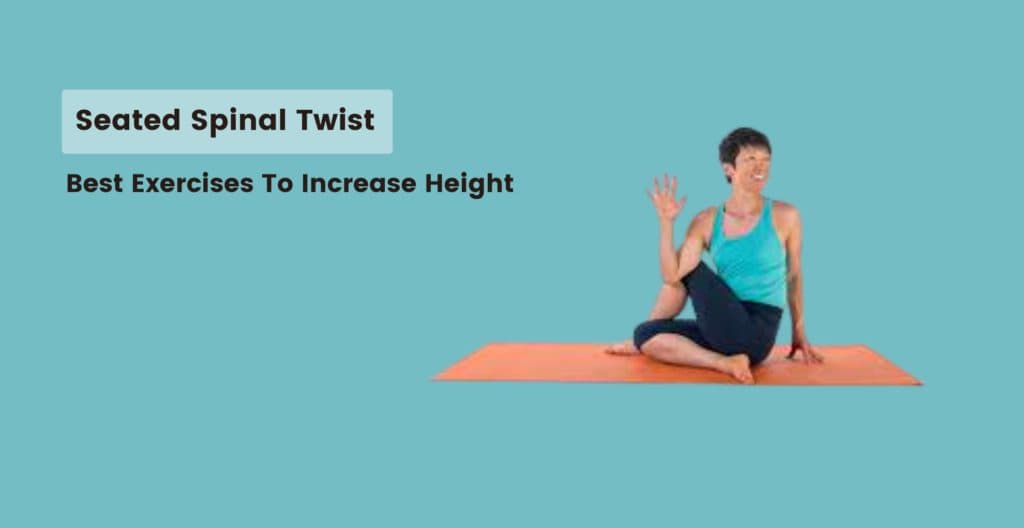
How to Do Seated Spinal Twists?
- Starting Position: Sit on the mat with your legs extended in front of you, feet flexed, and knees slightly bent. Inhale deeply, lengthening your spine.
- Exhale and Twist: Exhale as you rotate your torso to the right, placing your left hand on the outside of your right knee. Place your right hand behind you for support.
- Gaze: Look over your right shoulder to deepen the twist. Hold the twist for a few breaths, feeling the gentle stretch along your spine.
- Release and Switch Sides: Inhale, unwind your torso, and then repeat the twist on the other side.
45. Neck Stretches
Neck stretches are one of the best exercises to increase height and help release tension and improve flexibility in the neck muscles. These stretches are beneficial for individuals who spend long hours sitting at a desk, have poor posture, or experience neck stiffness.
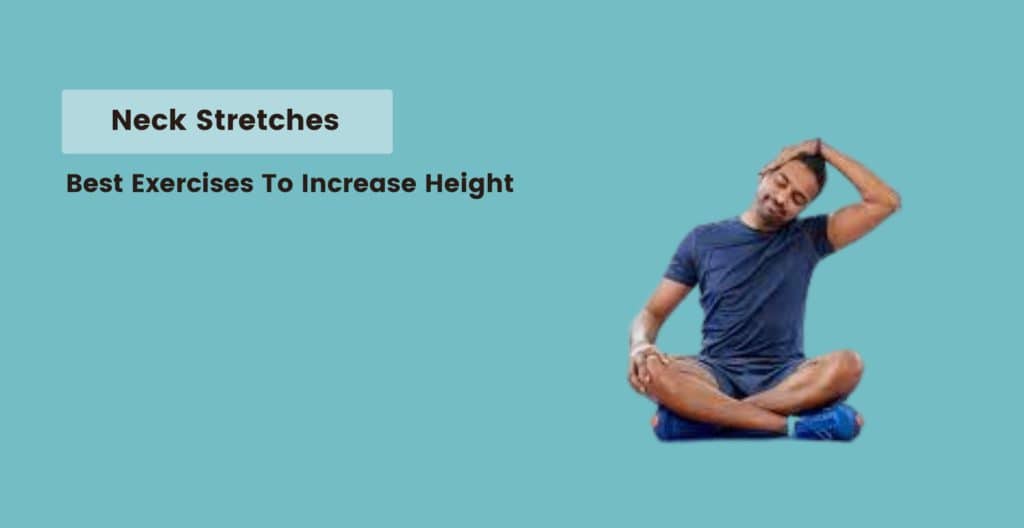
How to Do Neck Stretches?
- Starting Position: Sit or stand tall with your spine in a neutral position. Drop your chin toward your chest to stretch the back of your neck. Tilt your head backwards, looking up toward the ceiling or sky.
- Neck Lateral Flexion: Tilt your head to the right, bringing your right ear toward your right shoulder. Repeat on the left side.
- Neck Rotation: Turn your head to the right, looking over your right shoulder. Repeat on the left side. Hold each stretch for a few seconds, breathing deeply and relaxing your neck muscles.
46. Shoulder Stretches
Shoulder stretches help improve shoulder mobility and flexibility.
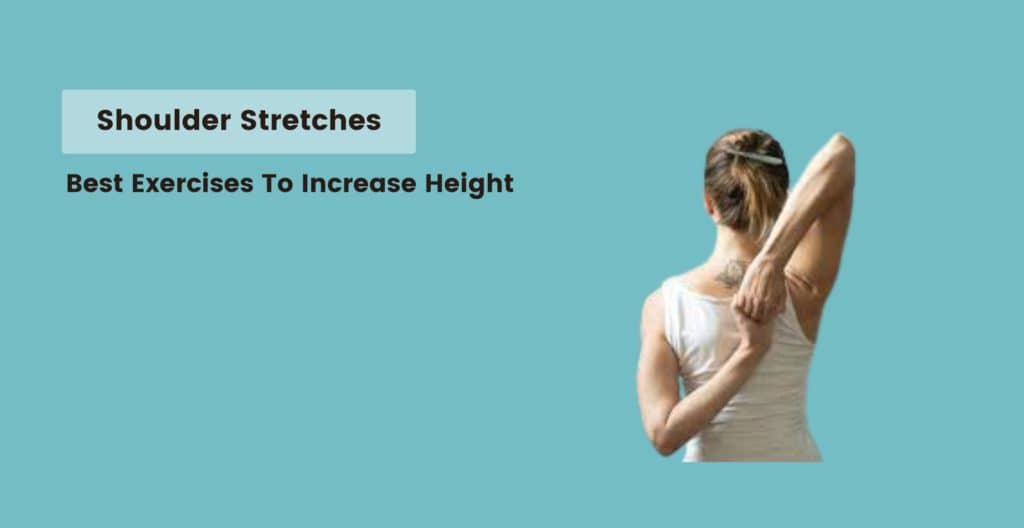
How to Do Shoulder Stretches?
- Starting Position: Stand tall with your feet together. Extend your arms out to the sides, and make small circles forward and backwards.
- Arm Swings: Swing your arms across your body, alternating right and left, to stretch the shoulders. Reach your right arm straight across your chest, and use your left hand to gently push it closer to your body. Repeat on the left side.
- Overhead Reach: Extend your right arm overhead, and bend it at the elbow. Reach your left hand behind your back to grasp your right fingers. Repeat on the left side.
- Hold and Breathe: Hold each stretch for a few seconds, breathing deeply and relaxing your shoulders.
47. Lat Stretches
Lat stretches target the latissimus dorsi muscles, which are the muscles located on the sides of the back. Stretching these muscles helps improve upper body flexibility and relieve tension in the back.
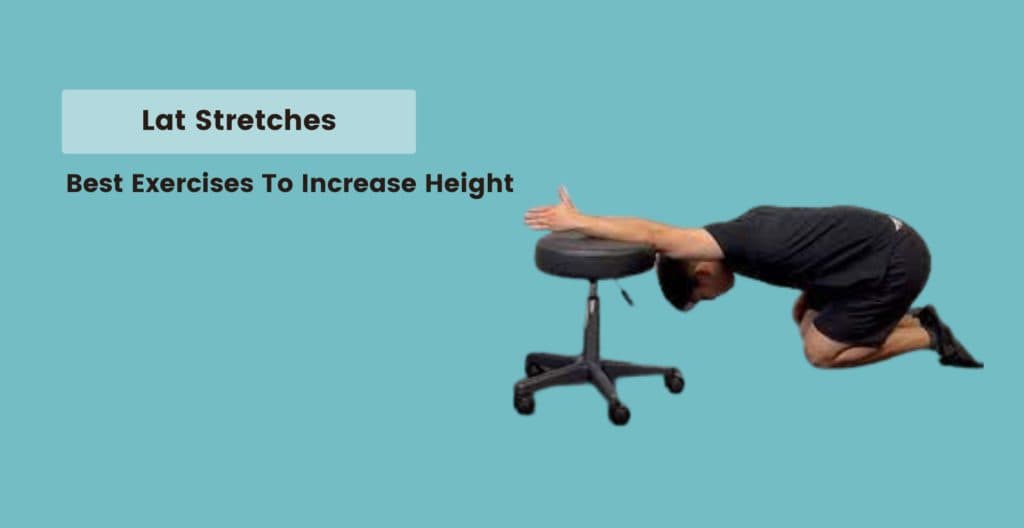
How to Do Lat Stretches?
- Starting Position: Stand tall with your feet hip-width apart. Reach your arms overhead and interlock your fingers, palms facing upward.
- Reach Upward: Inhale deeply, and as you exhale, reach your arms upward, lengthening your spine.
- Side Bend: While keeping your arms overhead, bend your upper body to the right side, feeling the stretch along your left side. Hold the stretch for a few breaths, feeling the gentle stretch along your left lat muscle.
- Switch Sides: Inhale and come back to the centre, then repeat the stretch on the other side, bending to the left.
48. Pilates Scissors
Pilates scissors are challenging core height increase exercises that target the abdominals and hip flexors while enhancing flexibility in the hamstrings.
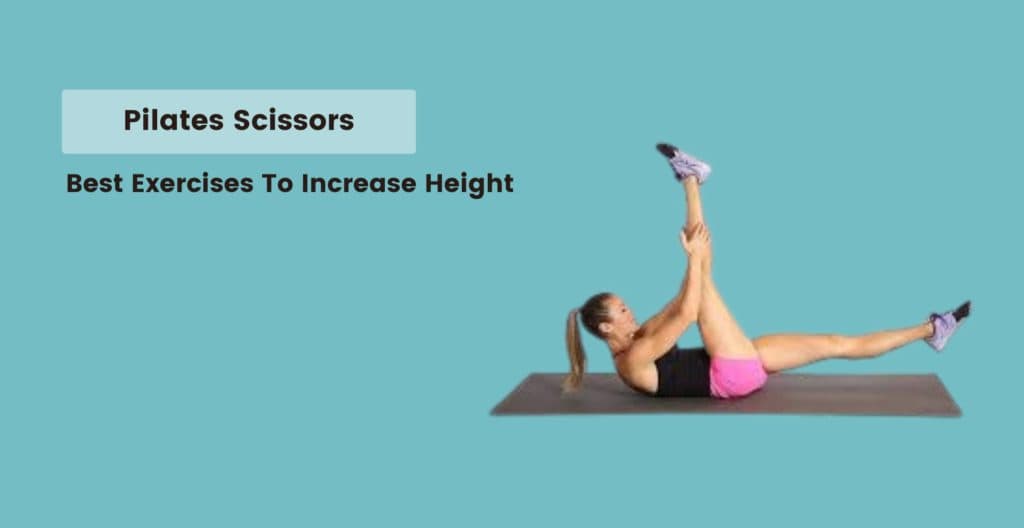
How to Do Pilates Scissors?
- Starting Position: Lie on your back with your legs extended toward the ceiling. Place your hands behind your head to support your neck, elbows wide.
- Leg Positioning: Lower your right leg toward the mat, keeping it a few inches off the floor. At the same time, lift your left leg toward the ceiling. Exhale as you switch legs, lifting your right leg back up while lowering your left leg toward the floor.
- Scissor Motion: Continue the scissor-like motion, switching legs in a controlled manner. Breathe deeply and steadily throughout the exercise.
49. Pilates Swan Dive
The Pilates Swan Dive is a dynamic exercise that strengthens the muscles of the back, glutes, and hamstrings while enhancing spinal mobility and flexibility.
How to Do Pilates Swan Dive?
- Starting Position: Lie face down on the mat with your legs extended and your arms stretched out in front of you.
- Inhale and Lift: Inhale deeply, and as you exhale, lift your upper body and legs off the mat simultaneously, engaging your back muscles.
- Arms and Legs Lift: Reach your arms backwards as you lift your chest, and lift your legs as high as you can without straining. Hold the lifted position for a moment, feeling the extension along your spine.
- Lower Down: Inhale as you lower your arms and legs back to the mat in a controlled manner. Repeat the exercise for the desired number of repetitions.
50. Burpees
Burpees are full-body, high-intensity and one of the best height increase exercises that combine elements of strength training and cardiovascular conditioning.
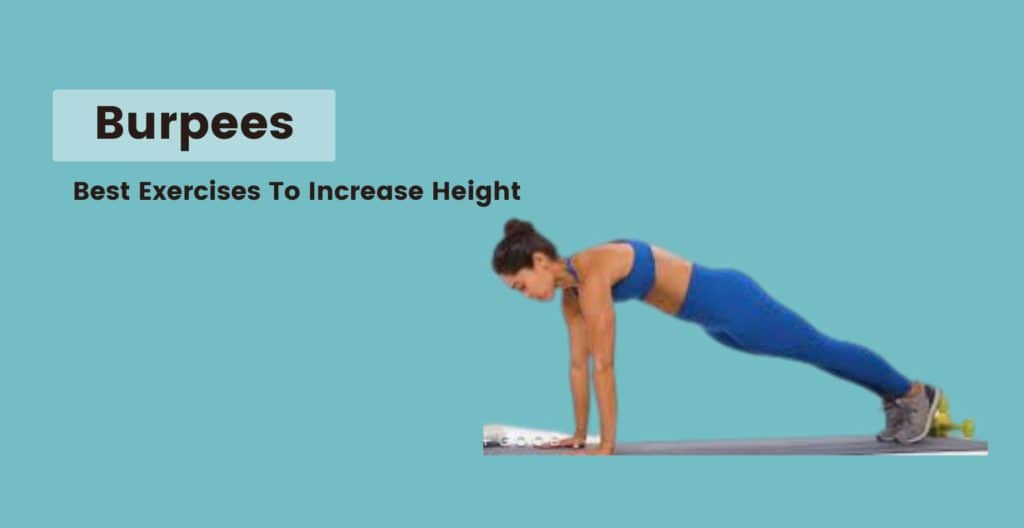
How to Do Burpees?
- Starting Position: Stand tall with your feet shoulder-width apart. Lower your body into a squat position by bending your knees and bringing your hands to the floor in front of you.
- Kick Back: Quickly kick your feet back to a plank position, keeping your body in a straight line from head to heels.
- Push-Up: Perform a push-up by lowering your chest to the floor and then pushing back up to the plank position. Jump your feet back toward your hands, returning to the squat position.
- Jump Up: Explosively jump upward, reaching your arms overhead. Land softly with bent knees, and immediately go into the next repetition.
How To Increase Height In 1 Week?
People often surf on the doubt of, How to increase height in 1 week? Before we understand the exercises to increase height in 1 week, we need to know if it is even possible to increase height in one week. Women’s height tends to go stagnant after hitting puberty, however the chances of growth still remain till the age of 18. But after attaining the age of 21, it becomes pretty much impossible for most to achieve any substantial height growth. The growth plates in the bones close by the end of puberty, and once they are closed, height cannot be increased. It can be even more difficult to increase. It can become even more difficult to increase one’s height in the span of one week. There are some things that people can do to promote healthy growth and development during childhood and adolescence, which may help to maximize their height potential. These include, eating a healthy diet rich in fruits, vegetables, whole grains, and lean protein, getting enough sleep, indulging in exercises to increase height in 1 week, managing stress.
However, there is no evidence that any of these things can increase height once the growth plates have closed. This is because your height is a result of a lot of factors like your genetics, diet, lifestyle, and environmental factors. In men, the height stops increasing in their early 20s, and in women after puberty. Nonetheless, here’s what a person can still do to increase height in 1 week:
- Exercise: There are several exercises to increase height in 1 week. It is one of the many factors that can dictate your height. People who exercise are more likely to be taller. Research also says exercise can help make your bones stronger as they adapt to the mechanical load.
- Improve posture: Good posture can make you appear taller. You must start by sitting properly and avoid slouching. This will not only make you look taller but help you correct your posture.
- Dress strategically: Vertical stripes and monochromatic outfits can make you appear taller. You may consider wearing shoes with a lift. Shoes with a lift can add a few inches to your height.
- Get Good Sleep: It is really necessary to have good amounts of sleep if you want to maximise your growth potential. Improper sleep can slow down your metabolism and restrict growth.
- Hydration: Your body needs to be hydrated to perform all the functions. When you’re focusing on achieving a taller height, hydration will help in overall physical growth.
- Vitamin D intake: Vitamin D is essential for calcium absorption, and calcium is necessary for bone growth and development. So focus on consuming more vitamin D foods that will help your body to grow.
- Follow a Balanced Diet: What you eat plays a huge role in your growth. Having a balanced meal that is rich in calcium and protein is essential for your bones and muscles. Also, make sure to consume foods that are high in Vitamin D.
It is important to note that these things will not actually increase your height, but they can make you appear taller.
Till What Age Does Height Increase?
For men, height increase usually stops around the ages of 18 to 21. However, in some cases, growth plates (areas of cartilage at the ends of bones) may fuse a little later, up to around 25 years of age. Whereas for women height increase typically stops around the ages of 16 to 18. Like men, there can be variations, and in some cases, growth plates may close a little later, around 20 years of age. Height is primarily influenced by genetics and hormonal factors, and it follows a predictable pattern during the growth and development phase of an individual’s life. Generally, height increase occurs at a more rapid pace during childhood and adolescence. There are approximate ages at which height increase typically stops for men and women.It’s important to note that these age ranges are approximate and can vary from person to person. Genetics play a significant role in determining an individual’s height potential, and environmental factors and nutrition during childhood and adolescence also influence overall growth.
How To Increase Height After 18?
While height is primarily determined by genetics and largely occurs during the growth and development phase, there are no guaranteed methods to significantly increase height after the age of 18. However, some lifestyle factors may optimize your posture and overall appearance, giving the illusion of being taller. Here are some pointers to consider:
- Maintain Good Posture: Stand and sit up straight to improve your posture. Good posture can make you appear taller and more confident.
- Exercise Regularly: Engage in exercises that focus on stretching and core strength. While this won’t increase your height, it can help you maintain flexibility and improve your overall appearance.
- Balanced Diet: Ensure you have a balanced diet rich in essential nutrients, especially during the growing years. A healthy diet supports proper bone and muscle development.
- Adequate Sleep: Get enough sleep every night. During sleep, the body releases growth hormones, which are essential for proper growth and development.
- Avoid Factors That Stunt Growth: Certain factors, such as smoking, excessive alcohol consumption, and inadequate nutrition, can potentially hinder optimal growth during adolescence.
- Avoid Scams and Unproven Methods: Be wary of products or treatments that claim to increase height after the growth plates have fused. There is no scientific evidence to support their effectiveness.
Remember that height is just one aspect of a person’s overall appearance, and there is much more to individuality and attractiveness than just height. Embrace your uniqueness, focus on a healthy lifestyle, and appreciate yourself for who you are.
12 Stretching Exercises to Increase Height
If you’re looking for the best exercise to increase height, then let us discuss these 12 effective stretching exercises to increase height with pictures.
- Cat-Cow Stretch
- Butterfly Stretch
- Pilates Double Leg Stretch
- Bar Hanging
- Standing Forward Bend
- Downward Facing Dog
- Bird Dog
- Mermaid Stretch
- Standing Stretch
- Side Stretch
- Side Bends
- Pilates Roll Over
1. Cat-Cow Stretch
The Cat-Cow Stretch is a simple yoga exercise that helps improve flexibility and mobility in the spine. It’s a gentle and accessible exercise suitable for beginners and can be done as part of a warm-up or cooldown routine. This exercise can help release tension from the back, abdomen and muscles which may help in increasing the height.
Here’s how to do it:
- Start on your hands and knees in a tabletop position, with your wrists directly under your shoulders and your knees under your hips.
- Inhale as you arch your back and lift your head and tailbone towards the ceiling. This is the Cow pose.
- Exhale as you round your back and tuck your chin towards your chest. This is the Cat pose.
2. Butterfly Stretch
The Butterfly Stretch is a simple and one of the best exercises to increase height that helps stretch the muscles in the hips, thighs, and lower back. It helps to improve flexibility and reduce tension in the lower body.
Here’s how to do it:
- Sit on the floor with your back straight and your legs extended in front of you.
- Bend your knees and bring the soles of your feet together, allowing your knees to drop outward. Hold your feet with your hands and gently pull them closer to your body.
- Relax your thighs and let gravity help you open your hips further. Hold the stretch for 15-30 seconds while breathing deeply.
3.Pilates Double Leg Stretch
The Pilates Double Leg Stretch is a core-strengthening exercise to increase height that enhances abdominal control and flexibility. It involves synchronizing arm and leg movements while maintaining stability.
How to Do It:
- Lie on your back with your knees bent, and feet flat on the floor. Engage your core and lift your head, neck, and shoulders off the mat.
- Inhale as you extend both legs diagonally, keeping them a few inches off the floor. Simultaneously, reach your arms overhead.
- Exhale as you circle your arms back to your sides and bring your legs back to the starting position. Keep your core engaged and repeat for the desired repetitions.
4. Bar Hanging
Bar hanging is a simple yet effective exercise to increase height that targets your upper body, particularly your shoulders, back, and arms. To perform bar hanging, follow these steps:
How to do it:
- Find a sturdy bar that can support your body weight.
- Stand in front of the bar and jump up to grab it with both hands. Make sure your hands are shoulder-width apart, and your palms are facing away from your body.
- Hang from the bar with your arms fully extended and your shoulders relaxed.
- Engage your core muscles and keep your body straight from head to toe.
- Hold the position for as long as you can. Beginners may only be able to hold on for a few seconds, while more advanced individuals can hang for a minute or longer.
- Rest for a few moments before repeating the exercise for several sets
5. Standing Forward Bend
This is one of the stretching exercises to increase height with pictures. It is a simple height exercise that can to done by anyone. The Standing Forward Bend exercise elongates your spine and stretches your hamstring helping in increasing your height.
How to do it:
- Stand straight with your feet hip-width apart and your arms by your sides.
- Inhale and raise your arms above your head. Exhale and fold forward from the hips, keeping your back straight.
- Place your hands on the floor beside your feet or hold onto your ankles.
- Relax your head and neck and allow the weight of your torso to draw you deeper into the stretch.
- Hold the pose for 30 seconds to a minute, breathing deeply. To release the pose, inhale and slowly lift your torso back up to a standing position.
6. Downward Facing Dog
Downward-facing dogs is an effective height exercise that should be done by everyone. This particular exercise helps in strenghtening and stretching various muscles like shoulders, hamstrings and calves, further assisting in increasing one’s height. It is an exercise to increase height:
How to do this height growth exercise:
- Start on your hands and knees with your wrists directly under your shoulders and your knees directly under your hips.
- Spread your fingers wide and press into your palms as you tuck your toes under. Exhale and lift your knees off the floor, straightening your legs to come into an inverted V-shape.
- Lift your sitting bones upward while pushing your hands and feet down into the mat.
- Allow your head to hang freely, gazing between your legs or toward your navel. Hold the pose for 30 seconds to a minute, breathing deeply and evenly.
7. Bird Dog
Bird Dog Pose is an essential core height exercise that not only relieves lower back pains but also stimulates height gain. Do try this exercise to increase height.
How to do it:
- Begin on your hands and knees with your wrists under your shoulders and your knees under your hips. Engage your core muscles by drawing your belly button toward your spine.
- Extend your right arm forward and your left leg back, keeping them parallel to the floor.
- Reach through your fingertips and out through your toes to lengthen your spine.
- Hold the pose for a few breaths, then release and switch sides. Repeat for several rounds, alternating sides and breathing deeply.
8. Mermaid Stretch
The mermaid stretch is a height exercise that helps with stretching your inner thighs and improving flexibility. It is one of the stretching exercises to increase height with pictures, given below.
How to do it:
- Begin seated on the floor with your legs folded to one side and your feet close to your hips.
- Place your left hand on the floor beside your left hip and reach your right arm up and over your head, stretching to the left side.
- Hold the pose for a few breaths, then release and switch sides by folding your legs to the other side and stretching your left arm up and over your head to the right side.
9. Standing Stretch
Standing stretch exercise can help your muscles to elongate and loosen up which may not actually increase your height but make you appear taller. This is the easiest and best height exercise.
How to do it:
- Begin standing with your feet hip-width apart and your arms at your sides. Inhale and reach your arms up overhead, interlacing your fingers and turning your palms up to the sky.
- Exhale and lean to the right side, keeping your feet rooted and your chest lifted.
- Breathe deeply and evenly as you hold the pose for a few breaths.
- Inhale and come back to the centre, then exhale and lean to the left side, again holding the pose for a few breaths.
10. Side Stretch
The Side Stretch is one of the best height increase exercises that target the muscles along the sides of the body, including the obliques and intercostal muscles. Here’s how to do it:
- Inhale and raise one arm overhead, reaching towards the sky, while keeping the other arm by your side.
- As you exhale, gently lean your upper body to the side of the raised arm, feeling a stretch along the entire side of your body.
- Hold the stretch for 15-30 seconds, breathing deeply and maintaining a straight line from your feet to the fingertips of the raised arm.
- Inhale as you return to the starting position with both arms by your sides.
11. Side Bends
Side bends are stretching exercises that target the muscles on the sides of the body, including the obliques and intercostal muscles. It helps to increase flexibility and mobility in the lateral muscles and is beneficial for improving posture and relieving tension in the side body.
Here’s how to do this height growth exercise:
- Stand with your feet shoulder-width apart and your arms relaxed by your sides.
- Inhale deeply, lengthening your spine, and as you exhale, gently slide one hand down the side of your leg, reaching towards your knee.
- Keep your other arm extended overhead, creating a long line from your fingertips to your hip. Hold the stretch for 15-30 seconds, feeling the gentle stretch along the side of your body.
- Inhale as you return to the starting position with both arms by your sides.
12. Pilates Roll Over
The Pilates Roll Over is a height exercise that stretches the hamstrings, muscles, and back helping in growth of height.
How to do it:
- Lie on your back with your legs extended straight up towards the ceiling and your arms at your sides. Your palms should be facing down, and your shoulders should be relaxed and pressed into the mat.
- Inhale deeply and engage your core muscles as you exhale.
- Begin to roll your hips and legs up and over your head, keeping your legs together and straight. Use your core muscles to control the movement, and avoid using momentum or swinging your legs.
- Continue rolling until your toes touch the mat behind your head. Keep your arms at your sides, with your palms facing down and your shoulders pressing into the mat.
- Inhale deeply and hold the position for a moment, then exhale as you begin to roll back down, one vertebra at a time until your hips and legs are back on the mat.
How to Grow Taller – Factors that affect Height Increase
Consuming a balanced diet, a sound sleep cycle, and an avctive lifestyle are some of the determinants of your height. Alongwith that there are various factors that might affect your height growth. Below listed are some of the factors that plays a vast role in teh growth of your height.
Genetics
Genetics is a fundamental factor influencing your height. The height of your parents and close family members can offer insights into your potential height. While genetics establish a range, other factors like doing height exercises, also contribute to whether you reach your maximum height potential.
Hormones
Hormones, especially growth hormones, play a crucial role in height growth. During childhood and adolescence, the body releases growth hormones that stimulate the growth plates in bones. And, during this age, one should practice exercise to get taller which impacts final height.
Nutrition
Proper nutrition is essential for healthy growth. A balanced diet rich in essential nutrients, vitamins, and minerals supports bone development and overall growth. Adequate protein intake, along with exercise to get taller is important as they provide the building blocks for tissue and bone growth. Following a Balanced Diet Chart can fulfill the nutrition requirements when complimented with other factors such as exercises and good sleep.
Gender
Gender differences influence height growth patterns. In general, males tend to experience growth spurts later than females. They also have slightly more height potential due to the growth plates in their bones typically closing later. Males and females both shall engage in exercise to get taller.
Physical activity
Regular physical activity is crucial for optimal growth. Weight-bearing and exercises like jogging, jumping, and resistance training help stimulate bone density and strength. Stretching exercises maintain flexibility and promote better posture, which can maximize your height potential.
Ethnicity
Ethnicity can play a role in height variation. Different ethnic groups may have unique growth patterns due to genetic and environmental factors. These variations are influenced by factors like diet, genetics, and regional differences.
Socioeconomic Factors
Socioeconomic conditions can indirectly impact height growth. Access to proper nutrition, healthcare, practicing height increase exercises at home and a supportive environment during childhood and adolescence can contribute to healthier growth and development.
How does Height Increase Exercises help to grow Taller?
While height increase exercises can be beneficial for overall health and well-being, it’s important to clarify that, height increase exercises are beneficial for most people, but it cannot alone significantly increase your height once you’ve reached your genetically determined height potential. Let us look at the advantages of the best exercise to increase height;
- Promotes Proper Growth and Development: Regular physical activity along with height increase exercises during childhood and adolescence can contribute to healthy bone development and muscle growth, which are essential for overall physical development.
- Stimulates Growth Hormones: While genetics mainly determine the secretion of growth hormones, some studies suggest that certain height increase exercises, particularly high-intensity activities like sprinting or jumping, may temporarily increase the production of growth hormone, which can be beneficial for growth during the developmental years.
- Strengthens Muscles and Bones: Regular weight-bearing height increase exercises, such as running, jumping, or resistance training, can strengthen muscles and bones, reducing the risk of injury and promoting overall physical health.
- Boosts Confidence and Self-Esteem: Engaging in regular stretching exercises for height can improve self-esteem and body image, which are essential for overall mental well-being.
Always consult with a healthcare professional before starting any height increase exercises program to ensure it is safe and appropriate for your individual needs and health status. If you have concerns about your height or growth, discussing them with a doctor can provide more personalized guidance.
Effective Tips to Increase Height Fast
Alongwith indulging in the exercises that can help increase the height, there are certain things that one can try to grow tall faster. Good nutrition, sound sleep, regular yoga and hydration are some of the important pointers to take note of. Let us see a few more tips that can help you grow taller;
- Balanced Nutrition
- Proper Sleep And Rest
- Accurate Posture Practice
- Healthy Breakfast
- Small And Frequent Meals
- Regular Yoga And Exercise
- Stay Hydrated
Balanced Nutrition
To promote healthy growth patterns in individuals, especially during their formative years it is important to follow good nutritional practices which include consuming different types of fruits and vegetables alongside whole grains, lean protein sources, and low-fat dairy products. The recommended balanced diet also needs to be complemented by regular physical activities; getting enough rest through ample sleep time; while simultaneously avoiding detrimental behaviours such as excessive drinking or smoking.
Proper Sleep And Rest
Sleep and rest are essential components in height increase, as they activate a series of reparative and regenerative processes. These mechanisms involve the growth and maturation of various tissues, including bones and muscles. Significantly, such processes are especially vital during the adolescent period when quick development is occurring.
Accurate Posture Practice
One cannot underestimate the impact of accurate posture practice on height increase. Proper alignment of the spine is paramount in promoting healthy growth and development of back muscles and bones.
Poor posture or slouching may compress the spinal cord, leading to decreased height over time; whereas maintaining good posture may elongate the spine and promote optimal growth.
Healthy Breakfast
Commencing the day with a nourishing breakfast can be advantageous in kickstarting metabolism and bestowing the body with adequate energy to sustain optimal functionality over the day. Furthermore, it can aid in controlling blood sugar levels and diminish the probability of consuming excess food at later meals.
Small And Frequent Meals
The body can get a steady supply of energy throughout the day and blood sugar levels can be regulated by eating modest, frequent meals. This could encourage ideal growth and development and keep the body in good shape.
Regular Yoga And Exercise
Height can be increased through consistent yoga and exercise. Exercise and physical exertion encourage the body’s production of growth hormones, which can support healthy growth and development.
Stay Hydrated
Numerous vital physiological processes, such as the delivery of nutrients and oxygen to the cells, control over body temperature and elimination of waste products- all depend on water. It is necessary for preserving healthy tissues and joints as well, as these are crucial for supporting the body’s framework and encouraging optimal development. Hence, it is crucial to stay hydrated throughout the day.
Expert Review on Exercises to Increase Height
Your height can play a huge role in your self-esteem. Being tall can be a boost to your confidence. There are a lot of factors that come into play when it comes to an individual’s height. The genetics they have, their lifestyle and food choices, and much more.
Although genes play a major factor in your height there are some positive lifestyle changes you can make to ensure that you reach your full growth potential. By doing various exercises, having a balanced diet and getting good amounts of sleep you won’t only feel healthy but also increase your chances of growing taller.
References
“The effects of exercise on growth.” n.d. PubMed. Accessed April 30, 2024. https://pubmed.ncbi.nlm.nih.gov/8614759/.
“The effects of exercise on growth.” n.d. PubMed. Accessed April 30, 2024. https://pubmed.ncbi.nlm.nih.gov/8614759/.
“Impact Exercise Increases BMC During Growth: An 8-Year Longitudinal Study.” n.d. NCBI. Accessed April 30, 2024. https://www.ncbi.nlm.nih.gov/pmc/articles/PMC2679385/.
FAQs
1. Can I grow taller from exercise?
Although genetics majorly determines the growth of our height, there are other factors that may also affect our height growth such as balanced nutrition, proper sleep, healthy lifestyle and indulgence in regular yoga or exercises. After hitting a certain age, it might not be possible to increase height even after doing exercises, however, there are exercises present that make one appear taller.
2. Can I grow 5 cm after 18?
Around 80% of our height relies entirely on genetics, the rest depends on our environmental conditions and lifestyle. Although it is considered almost impossible to increase height after 18, there are certain height increase exercise after 18 that may help you appear taller, such as forward bend, bar hanging, cobra stretch, etc.
3. How can I get 6 inches taller?
Indulging in regular physical activity, yoga and other exercises, along with maintaining the intake of a balanced diet, having early breakfast, getting proper sleep and weight management can altogther contribute to height growth.
4. Is there any Height growth age limit?
Yes, there is a height growth age limit. The majority of human height growth occurs during childhood and adolescence, typically from age 2 to 17 for females and age 2 to 20 for males. After this age range, the growth plates in the bones fuse and stop producing new bone tissue, which means that further growth in height is unlikely. However, there are some exceptions where individuals continue to grow in height after the typical age range.
5. Is it possible to increase height after 18?
It is unlikely to increase height if you don’t do height increase exercise after 18 because the growth plates in the long bones of the body, which are responsible for adding length to bones, typically fuse around this age. Once the growth plates fuse, bones can no longer grow in length and the potential for height increase decreases significantly. However, make sure to do some height growth exercises to increase height and to promote overall growth. Some of the height increase exercise after 18 that you can do are Mountain Pose, Child Pose, Jumping, Cycling and the like.
6. Does skipping increase height?
Skipping is a common yet important height growth exercise. It is included in one of the best exercises to increase height. It can help you to grow taller by improving your body posture. Make sure to be consistent with it to see results.
7. Which exercise is most effective in increasing height?
While there is no best exercise to increase height, there are few height increase exercises which can be considered if you are looking for a simple yet important exercise to increase height such as Bar Hanging, Standing Forward Bend, Downward Facing Dog, Bird Dog, Cobra Stretch, Mermaid Stretch, etc.
8. Can stretching help in increasing height?
Stretching exercises for height can improve flexibility, posture, and overall physical fitness, but there is no evidence to suggest that stretching alone can increase height beyond what genetics and natural growth patterns dictate. Nonetheless, it is a good practice to include height growth exercises in your daily routine. You can also do some height increase exercises at home.
9. Does walking help to increase height?
While walking may not be the best exercise to increase height, it may help you improve your posture which will make you appear taller. Other than this, walking does have several benefits such as strengthening the muscles and increasing endurance, reducing the risk of a stroke or heart disease, providing balance and stability and aiding weight loss.
1o. Does the gym increase height?
There is no scientific evidence to say that gym increases height. However, doing some height gain exercises may affect overall posture and body growth. One can do height increase exercises like burpees, jumping squats, low lunge arches etc to foster growth.
11. How to increase height after 18?
While there is no particular height increase exercise after 18 that guarantees results, it is still recommended to do certain height gain exercises to improve overall posture and foster growth. Apart from that, it is equally essential to have a balanced diet and to include all the essential nutrients in your meals. Hence, to increase height and maintain overall posture, it is highly recommended to do height increase exercise after 18 along with taking a balanced meal.

